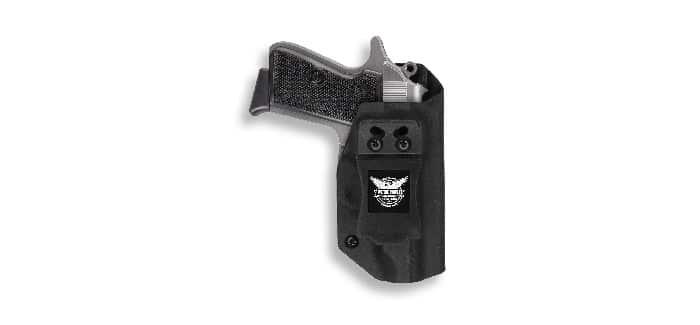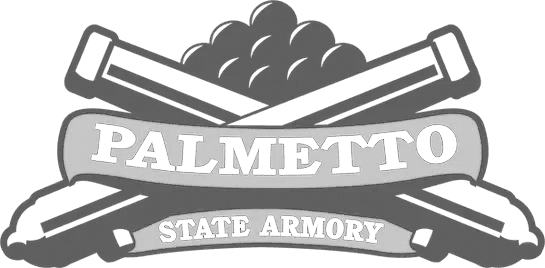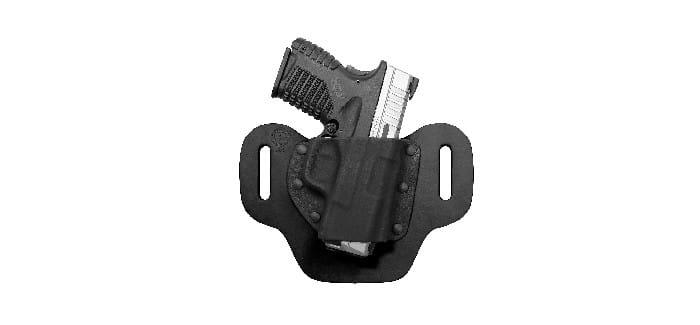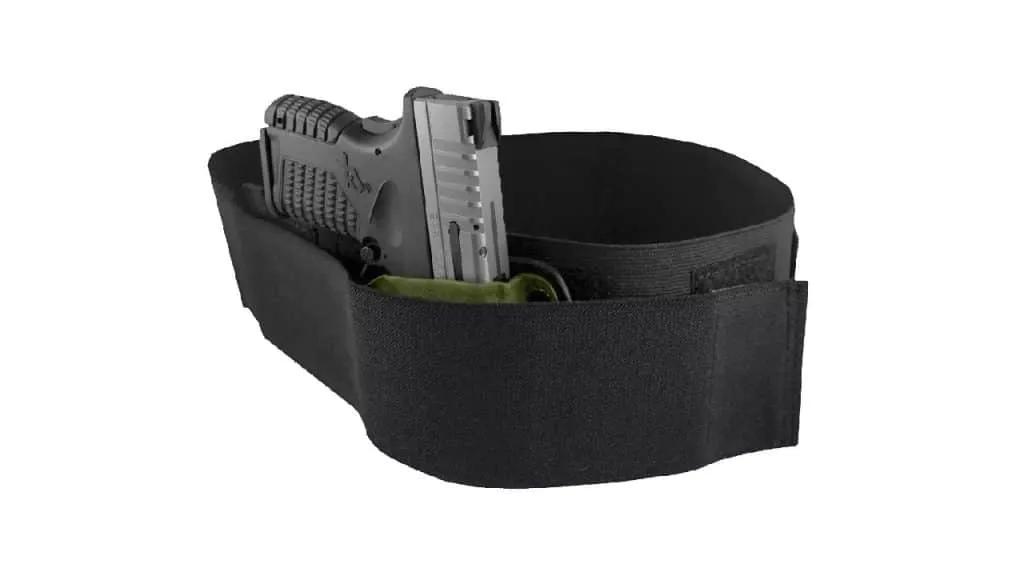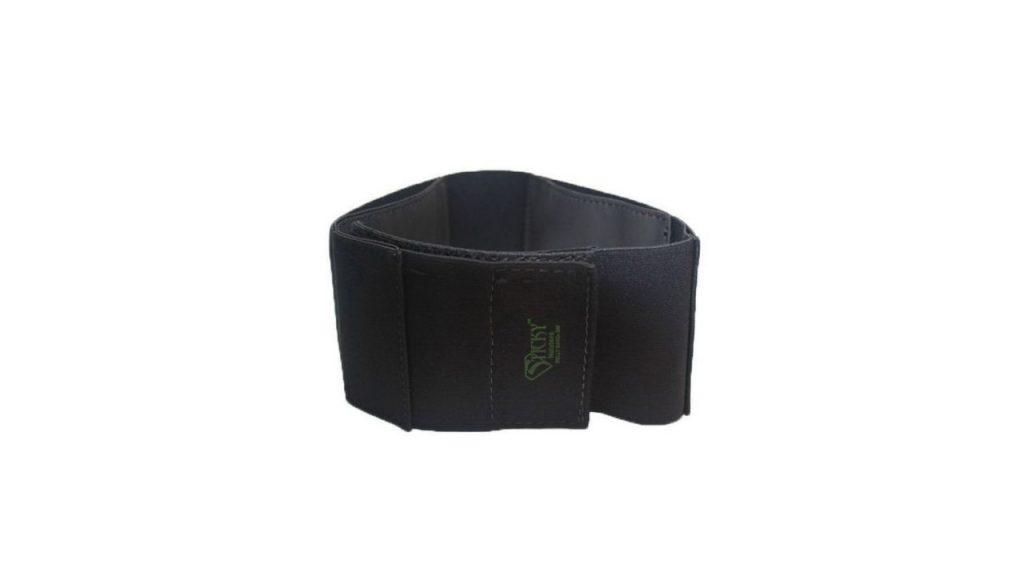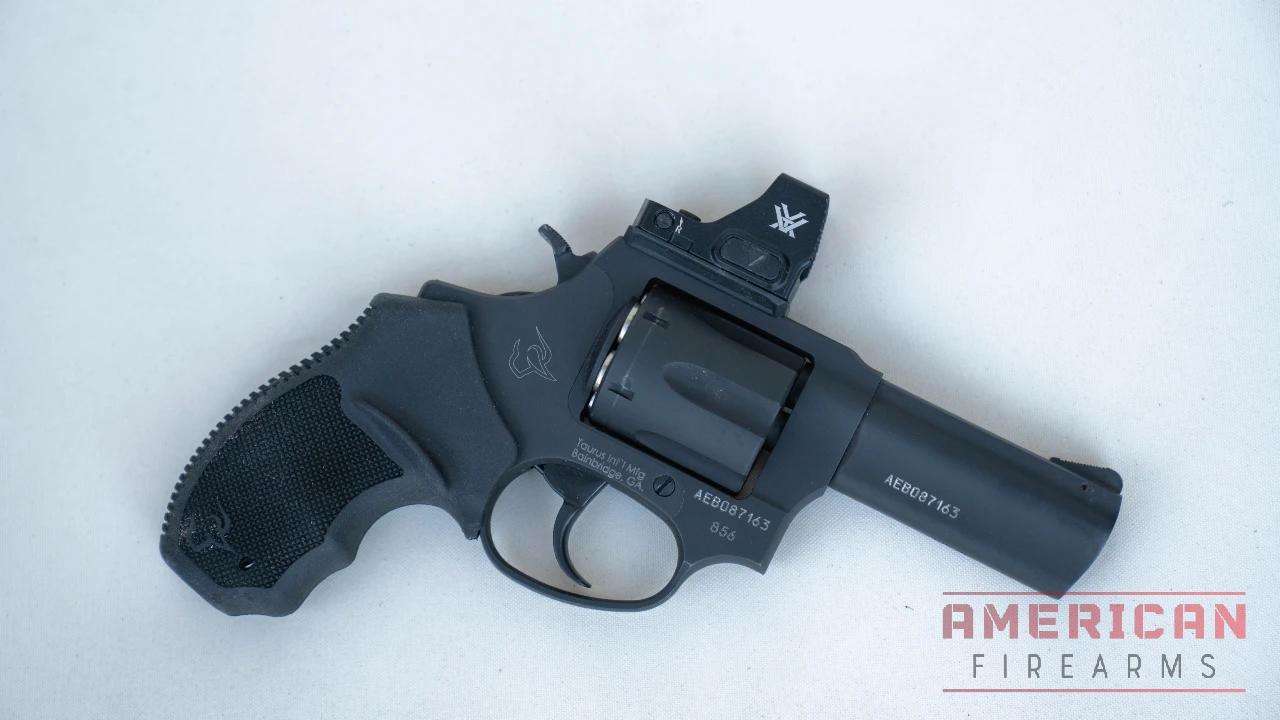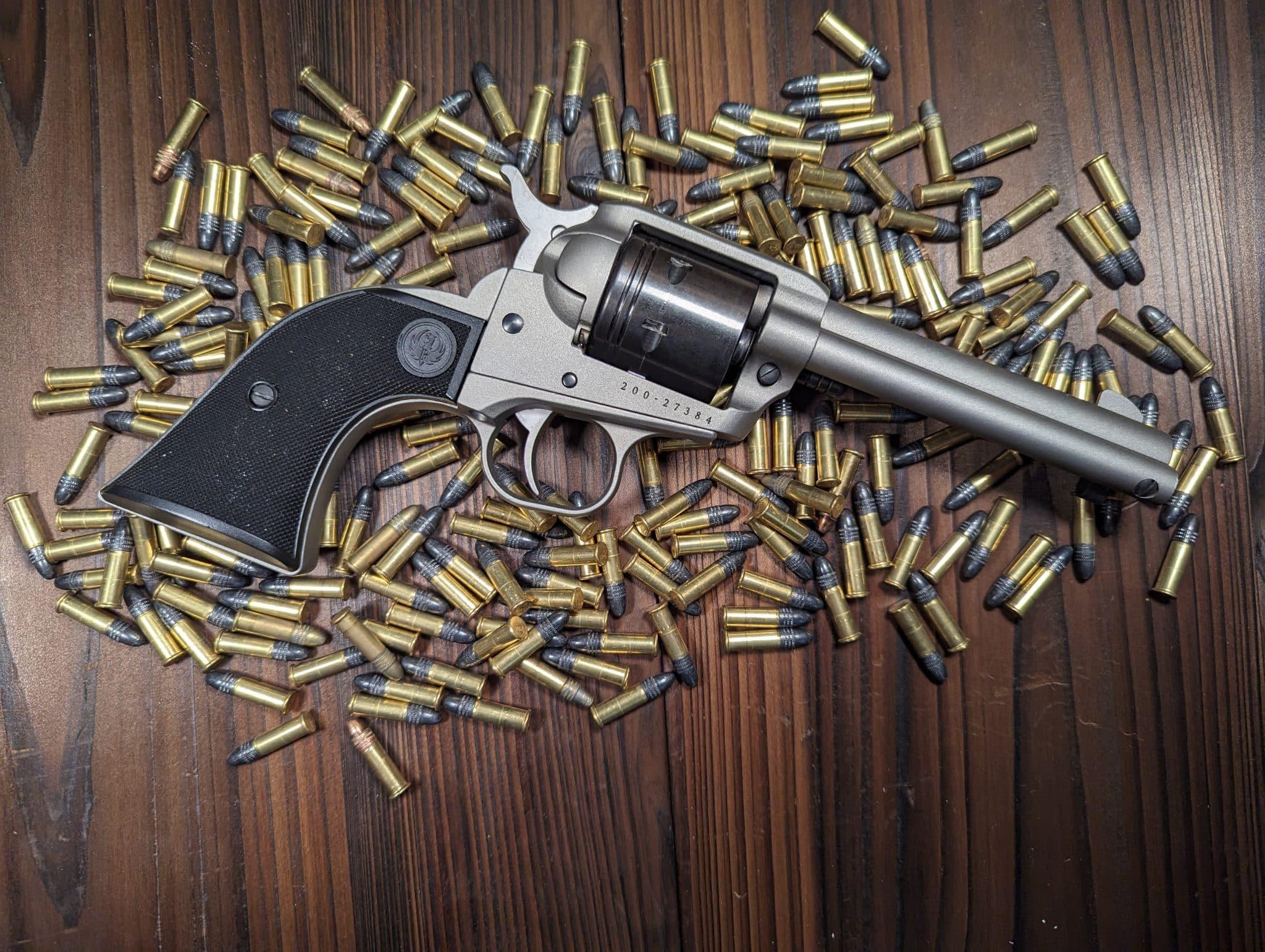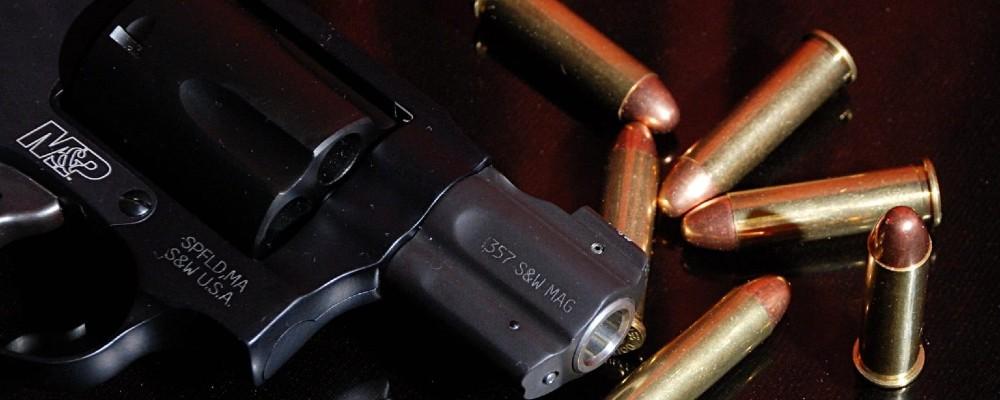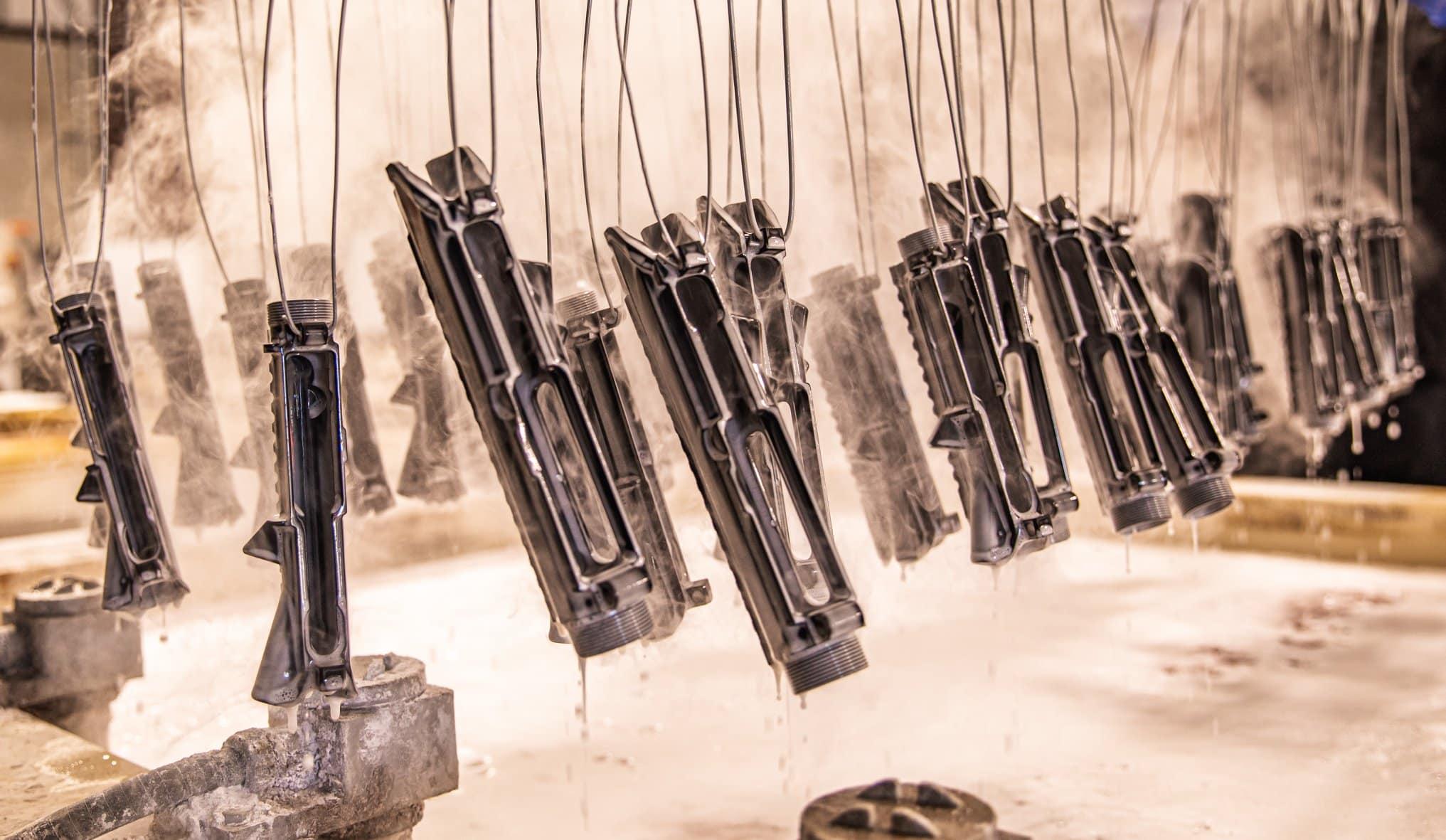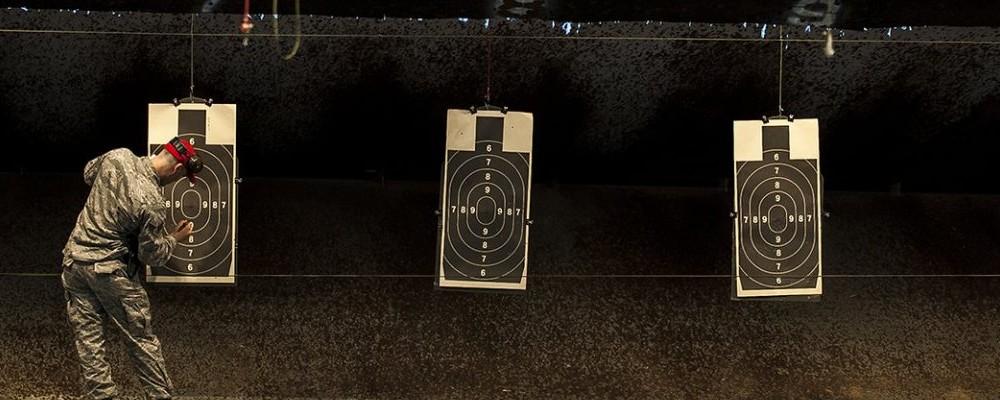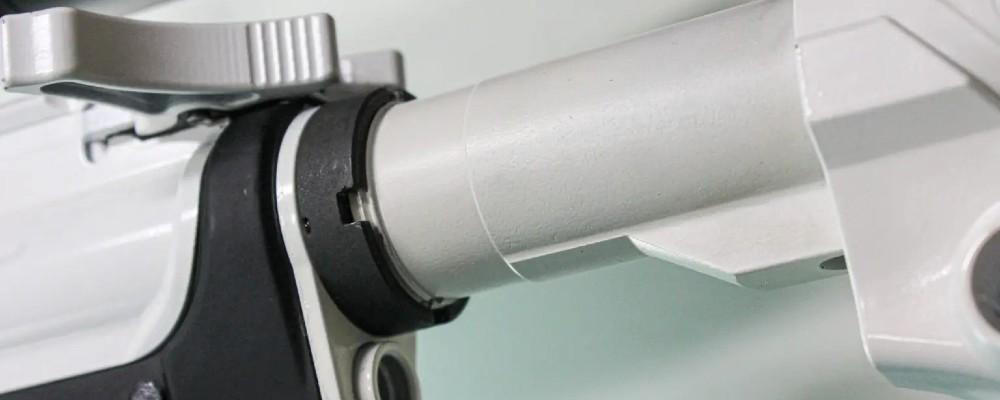Top Concealed Carry Holsters for Every Carry Position & Budget
Written By
Kenzie Fitzpatrick
Competitive Shooter
Edited By
Michael Crites
Licensed Concealed Carry Holder
Share:
Products are selected by our editors. We may earn a commission on purchases from a link. How we select gear.

Updated
Dec 2025
Ah, a million options for concealed carry holsters and you have to pick just one (or maybe a couple of options). The number of holster options for concealed carry have exploded over the last decade — in part due to the now almost 20 million American CCW holders, having grown 34% since 2016.
Rest assured — this guide will tackle a variety of options of high-quality holsters and help define what to look for when selecting the perfect fit for on-body carry.
If you take nothing else away from reading this article, remember this: what works for your friends and family may not be what works best for you. Read that again. Only you will be able to find out what works best for your needs. So, let’s dive in!
In This Article
Quick Start: Holster Comparison
| Name | Selection | Price |
|---|---|---|
Best Overall | $45.99 | |
IWB Runner Up | $55.99 | |
Best Holster System | $69.99 | |
Best Appendix Holster | $49.99 | |
Best Shoulder Holster | $52.99 | |
Best Universal Kydex Holster | $42.49 | |
Best Ankle Holster | $52.04 | |
Best Leather Shoulder Holster | $191 | |
Belly Band Runner Up | $36.95 | |
Budget Ankle Holster | $19.99 | |
Budget IWB Holster | $34.95 | |
Best for Women | $54.57 |
How We Test Concealed Carry Holsters
Comfort & Wearability
We wear each holster for a minimum of 30 consecutive days during normal daily activities, tracking comfort levels throughout extended wear periods of 8-12 hours.
Retention & Security
We conduct upside-down shake tests to verify the holster maintains secure retention without relying on external straps or secondary locks.
Draw Performance
We time multiple draw sequences from concealment to first shot, measuring both cold (first draw of session) and warm (after multiple repetitions) draw speeds.
Concealment
We photograph each holster under various clothing types including t-shirts, button-up shirts, light jackets, and athletic wear to document printing from multiple angles.
More on Our Testing Process
What Makes a Quality CCW Holster

There’s a lot to learn when it comes to carrying a firearm; learning how to handle a gun and shoot effectively, safe storage and proper firearm maintenance, and simply overcoming this new sensation of having a loaded gun on your person everywhere you go.
Picking a carry method is no easier, as there are thousands of holster options and an endless stream of opinions on the best carry method. Unfortunately, there aren’t a lot of “try before you buy” scenarios so understanding the carry options and what to look for in a high-quality, comfortable concealment holster is critical to carrying with confidence.
Safety
Rule number 1: the holster must be safe to use. This is the single most important consideration when dealing with firearms Do not buy a holster that does not cover the trigger or the trigger guard.
While exceedingly rare, accidental discharges when carrying a firearm on your body can be very dangerous. Ensuring the holster does not expose the trigger and prevents access to it is key as anything lodged between the trigger guard and trigger — with enough weight to pull the trigger rearward — can fire a round unintentionally.
The gun should also be secure enough in the holster to avoid falling out or moving out of place when carrying.
Material
If you carry daily, the holster’s material should provide the right balance of comfort and durability.
If the material fits your comfort level but is less than reasonably durable, the holster can wear prematurely — reducing the reliability of the hold on the gun, and forcing you to purchase multiple holsters over the years. If the holster isn’t comfortable to wear, well, you won’t wear it — defeating the purpose.
Leather holsters grab firmly onto the gun, giving you a very secure fit. They can be extremely comfortable and durable for some time but eventually can be stretched beyond viability from sweat, use, and Father Time. Pairing a super durable material (like Kydex) with leather, on the other hand, gives you maximum comfort and unbeatable durability in one package.
It’s very common to research and purchase what you think is the perfect holster, only to get it home and discover that it doesn’t fit nearly as well as you’d hoped. Anyone who’s carried for a few years has a drawer full of holsters that were perfect on paper, but failed the day-to-day reality. If you purchase a holster that doesn’t work for you, just return it and buy another.
There are simply too many great holsters out there to suffer necessarily.
Grip Accessibility
The goal of concealed carry is to pair effective concealment with quick access to your firearm, and new shooters in particular, when concerned with preventing printing, can forget that the need to quickly draw and defend themselves is the primary purpose of carrying a firearm.
If any aspect of the holster prevents you from grabbing your gun with a proper grip, that is a sign of poor fit.
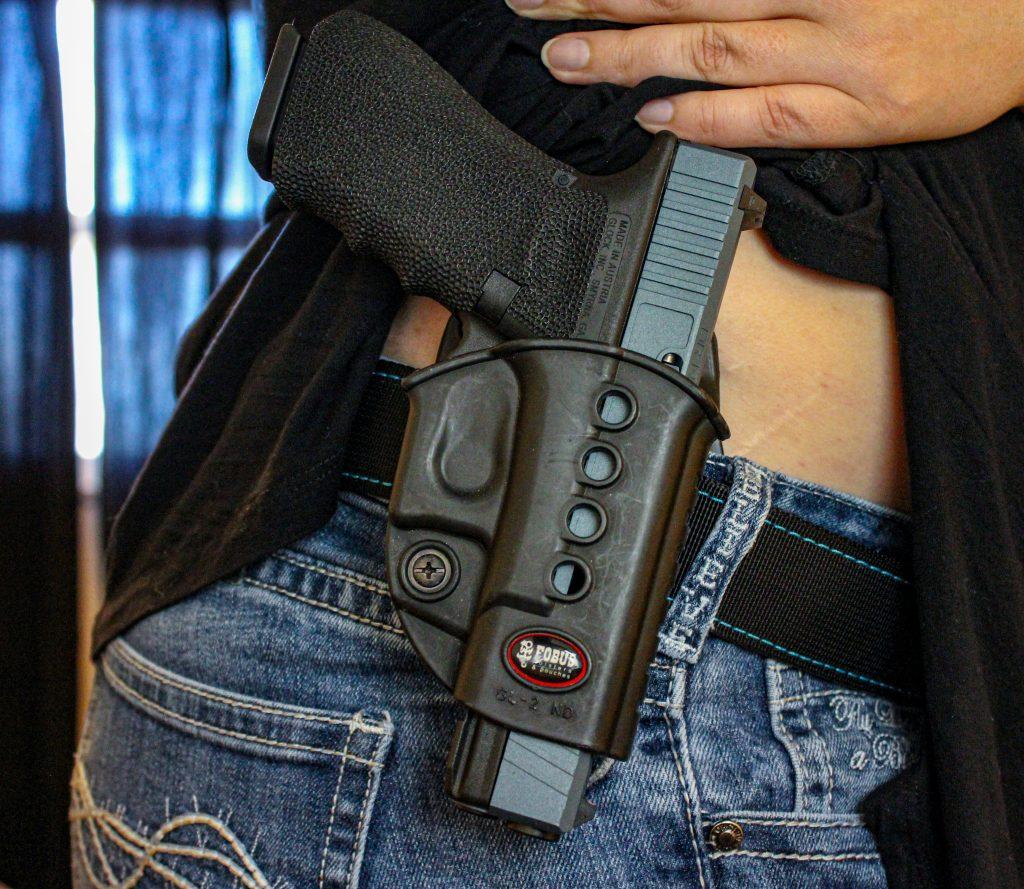
This requires you to think through how you will clear a coat or open-front shirt and retrieve the gun should you need to, which requires practice.
You can simply toss your garment aside and go for the grip, but you’ll be working against gravity and if you’re not fast enough — or something disrupts your movement — the garment will drop back into place you’ll have a handful of fabric.
A slightly better option is to use the first 3 fingers — pinky, ring, and middle — while disarticulating (pointing) the trigger finger for safety — and track back against the abdomen to control the fabric & give yourself enough time for a controlled draw.
Muscle memory paired with a holster that makes it easy to get the right grip on the gun is critical to effective self-defense.
Positive Retention
Retention is what keeps the gun in the holster. Without proper holster retention your gun will jostle around when on the move — at a minimum causing the firearm to be out of position should you reach for it and at worst causing the gun to fall out.
One easy test of holster retention is to holster an empty gun and tip the holster upside down. With a few shakes, you’ll quickly see if there’s enough retention to keep your gun in place.
Concealability
The point of legally carrying a concealed weapon is to conceal that fact. There’s a reason CCW pistols are small — you don’t want to advertise that you’re carrying. For many people, the idea that the person standing next to them is carrying a loaded pistol may induce fear or panic, and causing a scene is certainly counterproductive. Much like strong fences make good neighbors, a well-concealed pistol keeps everyone quiet.
Concealability has a lot to do with body shape and clothing choice. If your state doesn’t permit open carry, your concealed carry holster has to enable concealment. The concealability of a gun can change from standing to sitting, or when bending down to pick something up.
One of the best ways to explore a new concealed carry holster’s concealability is to spend some time trying to get it to fail. Jump around, sit down, bend over, and perform everyday functions to see if your gun prints or juts out of the holster. Ultimately, you want to ensure it stays concealed with the variety of movements you’ll make every day.
Wardrobe
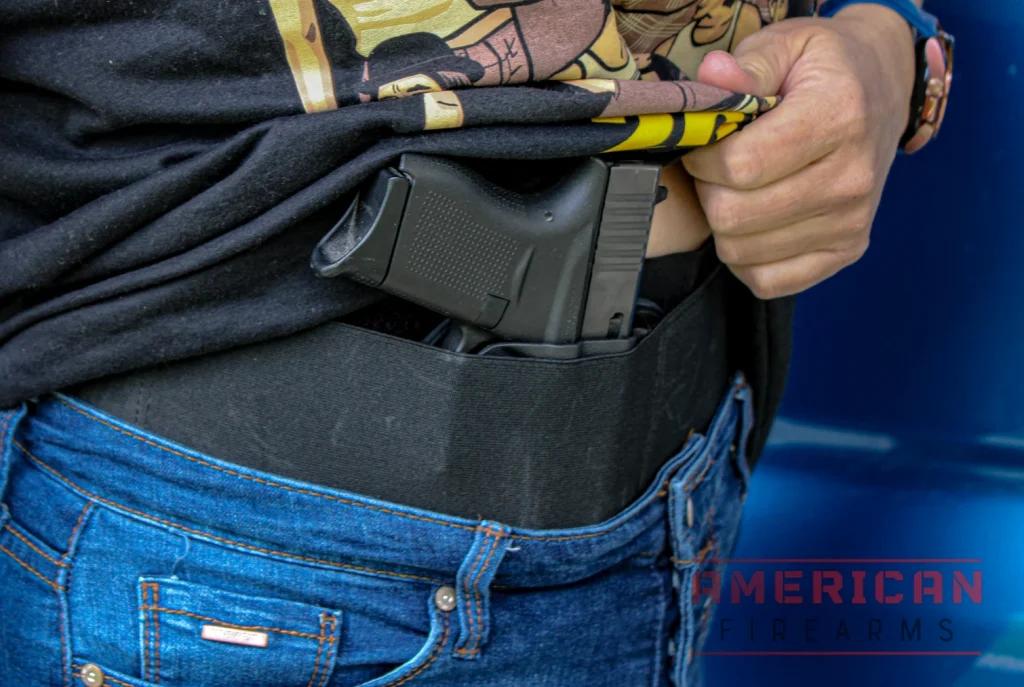
If you don’t wear rigid pants or a belt regularly, appendix carry may not be for you, but deep pant pockets work well for pocket holster carry. If you wear a kilt regularly, IWB holsters will most likely not be your concealed carry holster of choice.
For some, this may be a wake-up call. Your clothing has to support your concealed carry needs and if nothing in your current wardrobe will work it may be time to consider the kinds of clothing options that will provide appropriate support.
Concealed Carry Holster Selection Checklist
Want a quick way to determine the right holster for you? Use the below checklist to find the right holster for your specific needs, lifestyle, and carry requirements.
Step 1: Define Your Primary Use Case
- Daily concealed carry – General protection and peace of mind
- Professional/workplace carry – Specific job requirements or security needs
- Travel and vehicle carry – Extended trips and road travel
- Athletic/active lifestyle – Gym, running, outdoor activities
- Formal occasions – Business meetings, social events
- Competition shooting – USPSA, IDPA, or other organized sports
Step 2: Assess Your Physical Requirements
- Body type consideration – Slim, average, or larger frame
- Dominant hand – Right-handed or left-handed draw preference
- Physical limitations – Mobility issues, back problems, or other considerations
- Flexibility level – Ability to reach different carry positions comfortably
Step 3: Evaluate Your Wardrobe
- Professional attire – Suits, dress shirts, business casual
- Casual clothing – Jeans, t-shirts, hoodies, casual wear
- Athletic wear – Gym clothes, running gear, athletic shorts
- Seasonal variations – Heavy coats in winter, light clothing in summer
- Belt preference – Wide gun belt, dress belt, or no belt situations
Step 4: Determine Carry Position Preferences
- Appendix carry (12-1 o’clock) – Fast access, good for sitting
- Strong side hip (3-4 o’clock) – Traditional, comfortable for many
- Kidney carry (4-5 o’clock) – Better concealment, harder to access
- Small of back (6 o’clock) – Maximum concealment, safety concerns
- Cross draw (10-11 o’clock) – Good for seated positions
- Alternative positions – Shoulder, ankle, belly band
Step 5: Safety and Security Requirements
- Trigger guard coverage – Complete protection of trigger and guard area
- Retention level needed – Basic friction, active retention, or multiple security features
- Re-holstering safety – Rigid mouth, no fabric that can enter trigger guard
- Child safety considerations – Household with children present
Step 6: Performance Priorities (Rank 1-5, with 5 being most important)
- Draw speed – How quickly you can access your firearm
- Concealment – How well the holster hides your firearm
- Comfort – All-day wearability without discomfort
- Durability – Long-term reliability and construction quality
- Versatility – Ability to work with multiple firearms or situations
Step 7: Budget and Quality Considerations
- Budget range: Under $50 | $50-100 | $100-150 | $150+
- Material preference – Kydex, leather, hybrid, or fabric
- Brand reputation – Established manufacturers vs. newer companies
- Warranty and return policy – Protection for your investment
Step 8: Special Features and Accessories
- Adjustable cant – Ability to change carry angle
- Adjustable retention – Customizable grip on firearm
- Spare magazine carrier – Integrated or separate mag storage
- Sweat guard – Protection from body moisture
- Modular system – Ability to change carry methods
Scoring Your Results
Recommended Holster Types Based on Priorities:
- Speed + Competition Focus: Appendix IWB with minimal material
- Maximum Concealment: IWB hybrid at 4-5 o’clock position
- All-Day Comfort: Leather or hybrid IWB with sweat guard
- Professional Environment: Belly band or deep concealment IWB
- Active Lifestyle: Belly band or athletic-specific holster
- Budget Conscious: Quality IWB kydex from established manufacturer
Material Guide: Kydex vs. Leather vs. Hybrid Holsters
One of the most critical decisions you’ll make when selecting a concealed carry holster is the material. Walk into any gun shop or browse online retailers, and you’ll quickly discover that holsters come in three primary material categories: Kydex (thermoplastic), leather, and hybrid designs that combine both. Each material brings distinct advantages and trade-offs that directly impact your daily carry experience.
After testing hundreds of holsters across all three material types over the past decade, I’ve learned that there’s no universally “best” material — only the best material for your specific needs, climate, and carry style. Let’s break down what you need to know about each option.
Kydex: The Modern Standard
Kydex is a thermoplastic material that can be heated and molded to fit specific firearms with remarkable precision. Since the 1990s, Kydex has become the dominant material in the holster industry, and for good reason.
The rigid shell locks onto your firearm’s trigger guard and other contact points, creating an audible “click” when the gun seats properly — a reassuring confirmation that your firearm is secure.
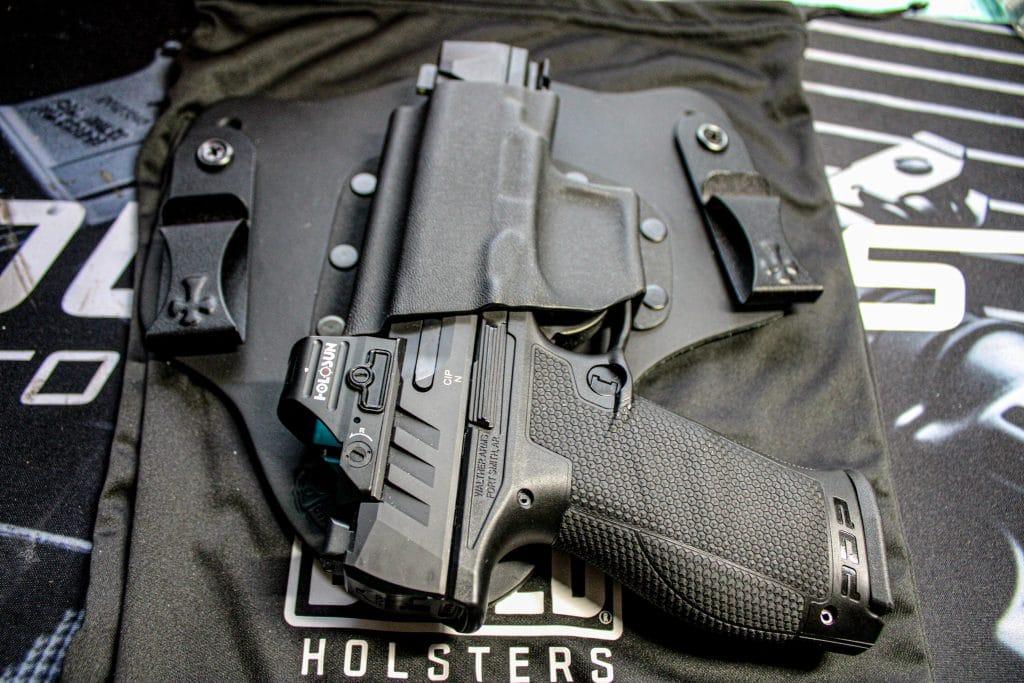
Kydex Advantages
Retention consistency is where Kydex truly shines. Unlike leather, which can stretch and lose retention over time, a properly made
One of the most critical decisions you’ll make when selecting a concealed carry holster is the material. Walk into any gun shop or browse online retailers, and you’ll quickly discover that holsters come in three primary material categories: Kydex (thermoplastic), leather, and hybrid designs that combine both. Each material brings distinct advantages and trade-offs that directly impact your daily carry experience.
After testing hundreds of holsters across all three material types over the past decade, I’ve learned that there’s no universally “best” material — only the best material for your specific needs, climate, and carry style. Let’s break down what you need to know about each option.
Durability is another major strength. Kydex holsters are virtually indestructible under normal use. I’ve carried the same Kydex holster daily for three years through Wyoming winters and summers, and it shows minimal wear. The material won’t rot, mold, or degrade from moisture exposure. Drop it, sit on it, leave it in a hot car — Kydex keeps working.
Low maintenance makes Kydex ideal for new carriers. There’s no break-in period, no conditioning oils to apply, and cleaning takes seconds with a damp cloth. The holster works perfectly from day one and requires essentially zero upkeep.
Moisture resistance is critical if you carry in humid climates or sweat heavily. Kydex doesn’t absorb moisture, which means it won’t transfer sweat to your firearm or create corrosion-friendly conditions against your gun’s finish. After a summer day in 95-degree heat, my Kydex holsters dry in minutes.
Precision molding allows Kydex holsters to accommodate modern features like red dot optics, threaded barrels, and weapon-mounted lights. Many leather holster makers struggle to accommodate these features, but Kydex can be molded to clear any protrusion.
Kydex Disadvantages
Comfort against bare skin is Kydex’s biggest weakness. The rigid edges can dig into your side, especially when bending or sitting. Most Kydex IWB holsters work best when worn with an undershirt barrier, though some manufacturers have addressed this with rounded edges and sweat guards.
Noise during reholstering is unavoidable with Kydex. That satisfying “click” when holstering becomes a liability in quiet environments. If you’re reholstering in a movie theater or during a church service, everyone nearby will hear it.
Abrasion on firearm finish is a real concern with some Kydex holsters. The rigid material can wear through finishes over thousands of draw cycles, particularly on guns with softer Cerakote or Tenifer finishes. Quality manufacturers polish the interior of their Kydex shells to minimize this, but some wear is inevitable.
Cold weather discomfort surprises many new carriers. In freezing temperatures, Kydex against your skin (even through clothing) can feel uncomfortably cold for the first 10-15 minutes of wear. This usually isn’t a deal-breaker, but it’s noticeable.
Limited flexibility means Kydex holsters don’t conform to your body shape the way leather does. Some manufacturers address this with body contours molded into the Kydex, but the material itself won’t mold to you over time.
Leather: The Traditional Choice
For over a century, leather was the only serious holster material. While Kydex has captured much of the market, quality leather holsters remain excellent choices for specific applications.
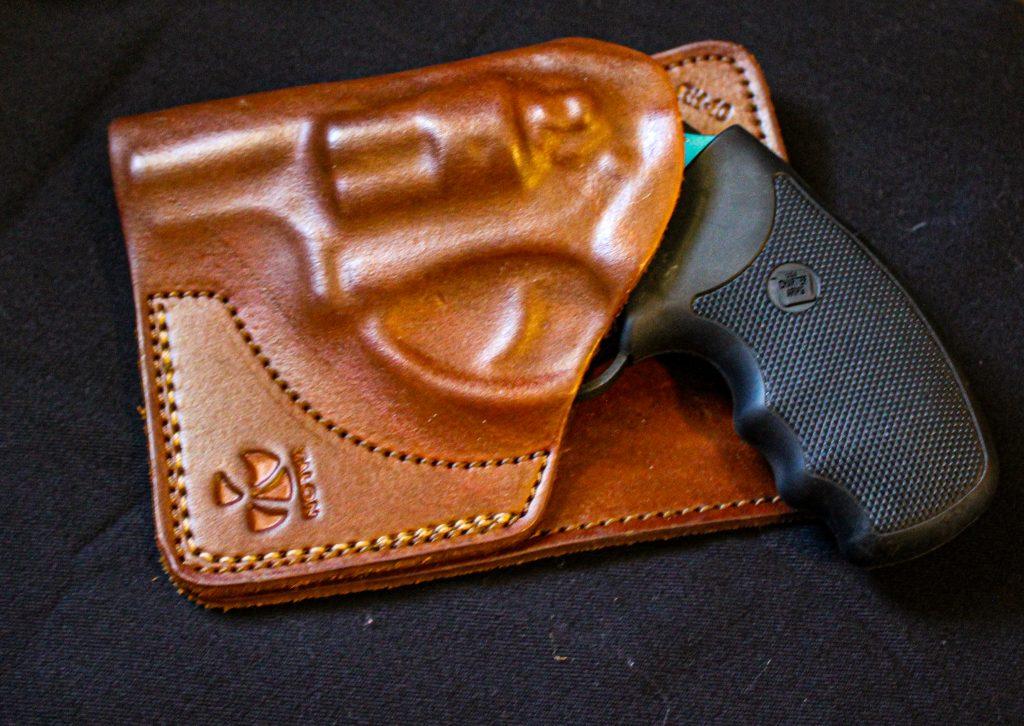
Leather Advantages
All-day comfort is leather’s signature strength. A well-made leather holster conforms to your body over time, creating a custom fit that Kydex can’t match. The material breathes better than plastic, reducing sweat buildup against your side. For 12+ hour carry days, many experienced carriers still prefer leather.
Silent operation makes leather ideal for environments where discretion matters. Reholstering produces no click or scrape — just a quiet slide. I’ve carried leather holsters during formal events where the silence was worth the trade-offs.
Aesthetic appeal shouldn’t be dismissed. A beautifully crafted leather holster is a work of art. If you appreciate fine leather goods, a premium holster from makers like Milt Sparks or Galco offers satisfaction beyond pure function.
Less abrasive on firearms means leather holsters won’t wear your gun’s finish the way some Kydex can. The soft interior protects your firearm while still providing adequate retention.
Natural material benefits matter to some carriers. Leather doesn’t get as cold in winter or as hot in summer against your skin. The organic material also feels more comfortable to many people than plastic.
Leather Disadvantages
Break-in period required means new leather holsters can be frustratingly tight. You’ll need to holster and draw dozens of times before the leather seats properly around your firearm. During this break-in, draws can be stiff and inconsistent.
Retention degradation over time is inevitable with leather. Sweat, body heat, and repeated use will gradually stretch the leather, loosening retention. A holster that provides perfect retention today might need replacement in 2-3 years of daily carry. Some holsters include retention screws, but the leather itself will still stretch.
Maintenance requirements include regular conditioning with leather treatments to prevent drying and cracking. Neglect this maintenance, and your holster will deteriorate. Sweat-soaked leather also needs time to dry completely to prevent mold growth.
Moisture vulnerability creates problems in humid climates. Sweat-soaked leather can transfer moisture to your firearm, potentially causing corrosion. The leather itself can rot or develop mildew if not properly dried and maintained.
Limited modern feature compatibility means many leather holsters can’t accommodate optics, lights, or compensators. The material is difficult to work around these protrusions while maintaining retention and trigger guard coverage.
Reholstering difficulty increases as leather absorbs sweat and body heat. The holster mouth can collapse, making one-handed reholstering dangerous without careful attention. This isn’t an issue with properly designed leather holsters that include reinforced mouths, but cheaper options often fail here.
Hybrid Holsters: Combining the Best of Both
Hybrid holsters attempt to capture Kydex’s retention and durability while maintaining leather’s comfort. The typical design uses a Kydex shell molded to the firearm, mounted on a leather or synthetic backer that sits against your body.

Hybrid Advantages
Comfort meets retention is the core promise. The Kydex shell provides consistent retention and protects the trigger guard, while the leather backer spreads the holster’s footprint across a larger area of your side, reducing pressure points. For many carriers, this combination feels noticeably more comfortable than pure Kydex during extended wear.
Sweat protection comes from the backer material creating a barrier between the Kydex shell and your body. Many hybrid holsters use suede backing or breathable synthetic materials that wick moisture away from both your body and the firearm.
Adjustable retention is standard on most hybrid holsters, with screws allowing you to dial in your preferred retention level. Unlike leather, this retention won’t degrade significantly over time since the Kydex shell maintains its shape.
Modern feature compatibility mirrors Kydex holsters — hybrids can accommodate optics, lights, and other accessories since the shell is precision-molded thermoplastic.
Hybrid Disadvantages
Bulk and thickness represent the main trade-off. Adding a leather backer to a Kydex shell creates a thicker holster profile than either material alone. This can impact concealment, particularly for smaller-framed carriers or during summer carry with light clothing.
Higher cost is typical, with quality hybrid holsters often costing $20-40 more than comparable pure Kydex options. You’re paying for the additional materials and more complex construction.
Leather maintenance still required means the backer will need occasional conditioning, and sweat-soaked leather components still need drying time. You haven’t eliminated leather’s maintenance demands — just reduced them.
Potential delamination can occur in poorly made hybrids where the Kydex shell separates from the backer. Quality manufacturers use robust attachment methods (rivets, Chicago screws), but cheaper options may fail at the connection points.
Nylon and Fabric Holsters
While Kydex, leather, and hybrid designs dominate traditional holster markets, nylon and elastic fabric holsters fill specific niches.

Belly bands made from elastic neoprene or similar materials excel for athletic wear and clothing without belt support. These work well for running, gym workouts, or wearing dresses and yoga pants. The trade-off is less retention and slower access compared to rigid holsters.
Nylon pocket holsters offer affordable concealment for small firearms. At $15-25, these represent the most budget-friendly holster option. However, retention is minimal, durability is limited, and trigger guard coverage varies widely in quality.
Avoid completely soft holsters without rigid trigger guard protection. Uncle Mike’s-style fabric holsters that rely entirely on friction can allow foreign objects into the trigger guard or even enter the trigger guard themselves during reholstering. For concealed carry, a rigid trigger guard covering component is essential.
Choosing Materials by Climate
Your local climate should heavily influence material selection.
Hot, humid environments favor Kydex or hybrid holsters with synthetic backers. Leather absorbs too much moisture and can become uncomfortable and unhealthy for your firearm in these conditions. I’ve carried in 100+ degree summers, and Kydex’s moisture resistance is invaluable.
Cold, dry climates make leather more appealing. The material doesn’t get as uncomfortably cold against your body, and moisture concerns are minimal. Wyoming winters taught me to appreciate leather’s thermal properties.
Variable climates benefit from hybrid holsters that balance both extremes, or owning separate holsters for seasonal carry — Kydex for summer, leather for winter.
Care and Maintenance by Material
Kydex maintenance:
- Wipe clean with damp cloth as needed
- Check retention screws monthly; apply Loctite if they loosen
- Inspect for cracks near mounting holes annually
- Store away from extreme heat sources (>200°F can deform Kydex)
Leather maintenance:
- Condition with leather treatment every 3-6 months
- Allow to dry completely after sweat exposure before storage
- Check stitching and retention regularly
- Re-mold retention by wetting and allowing to dry around firearm if needed
Hybrid maintenance:
- Follow both Kydex and leather protocols for respective components
- Check attachment points between shell and backer quarterly
- Tighten any loose rivets or screws promptly
The Bottom Line
For most new concealed carriers, I recommend starting with a quality Kydex or hybrid holster. The consistency, durability, and low maintenance make these materials more forgiving while you develop your carry habits and preferences. Kydex’s retention won’t degrade as you learn, and you won’t need to worry about maintenance routines on top of everything else you’re learning about concealed carry.
Once you’ve carried for 6-12 months and understand your carry patterns, preferences, and climate challenges, you’ll be better positioned to explore leather options if their advantages appeal to you.
The material matters, but it’s not everything. A well-designed holster in any of these materials will outperform a poorly designed holster in the “best” material. Focus first on proper trigger guard coverage, adequate retention, and appropriate design for your carry position — then let material preferences refine your choice within those parameters.
Understanding Carry Positions
Clock Position System Explained
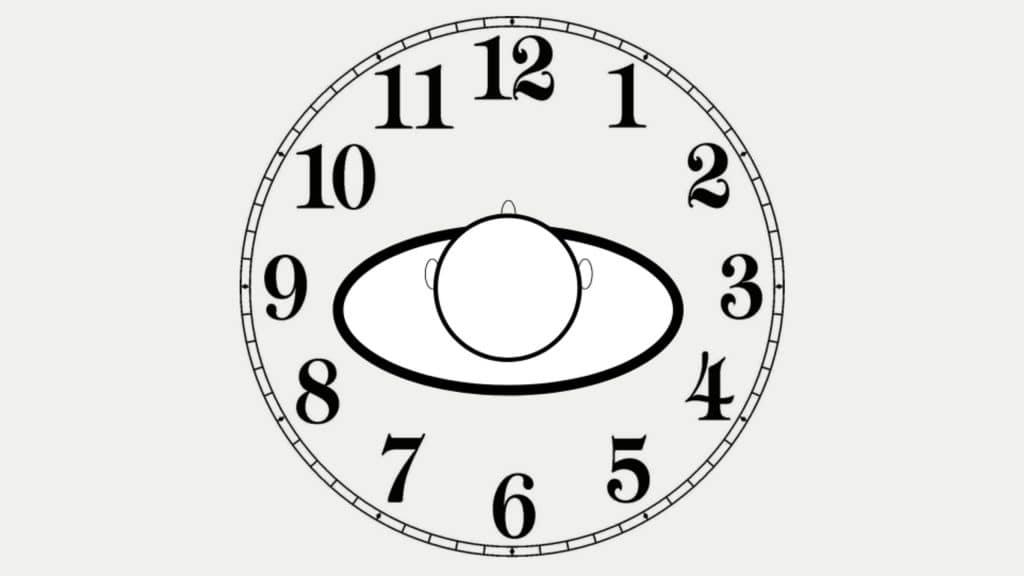
Strong side hip carry (3 or 9 o’clock)
- Best For: New carriers, open carry, uniform carry
- Advantages:
- Most natural draw motion
- Excellent for OWB carry
- Good weight distribution
- Easy to practice draw stroke
- Comfortable for extended wear
- Disadvantages:
- Slower than appendix (1.2-1.5 seconds)
- Can print with tight clothing
- Difficult access while seated
- May sweep others during draw
- Clothing Requirements: Cover garment needed, sturdy belt required
- Very popular carry position that is the most comfortable position for many people who carry for longer periods. It also allows for a quick draw with the hand that shares the side of the body as the holster.
- Popular with both IWB and OWB belt holsters. For right-handed shooters, you’ll find your strong side at the 3 o’clock position (the right hip) — flip that around for lefties, and you’ll find the strong side at 9 o’clock (left hip).
- Gun tilt with either hand is generally forward, with a slight rear cant, and you’ll often see final carry positions on the 30s — that is 3:30 or 9:30 — which helps shift pressure to the rear of the hip bone, making carry considerably more comfortable.

Appendix carry (1 to 2 o’clock)
- Best For: 1-2 o’clock for right-handed shooters wanting appendix benefits with comfort.
- Advantages:
- Faster than hip carry (1.1-1.4 seconds)
- More comfortable than straight appendix
- Good access while seated
- Reduced printing when bending
- Disadvantages:
- Still requires muzzle discipline
- Can interfere with seatbelt
- Needs proper holster design
- Popular with IWB holsters (OWB could be, uh painful), appendix carry places the firearm at the 12 o’clock position (beneath the belly button) or a few degrees offset: 1 to 2 o’clock for righties, 10 to 11 o’clock for southpaws, with a positive/negative 90° angle gun tilt.
- Appendix carry is excellent if you sit or drive a lot, as the placement prevents the seat belt from obstructing the draw. However, this carry position also aims the pistol at your legs and requires a mastery of safe gun control.
- It can be uncomfortable for bigger fellas, so YMMV.
Kidney carry (4-5 O’Clock)
- Best For: Maximum concealment, smaller firearms
- Advantages:
- Excellent concealment
- Difficult for others to detect
- Good for deep cover situations
- Works with smaller firearms
- Disadvantages:
- Slower draw (1.5-2.0 seconds)
- Awkward draw angle
- Uncomfortable while seated
- Can cause back discomfort
- Offering the advantage of improved concealment vs. the 3/9 o’clock positions, kidney carry is ideal for those who stand or walk a lot.
- Sitting while kidney carrying can be a challenge because the pistol and holster are directly behind your hip, at either the 4 or 5 o’clock position if right-handed, 7 or 8 o’clock if left-handed — essentially putting you in the position of sitting against the gun. Not comfy if you’re using a Kydex or rigid holster.
- With the increased concealment comes the disadvantage of a slower draw — requiring you to circumnavigate your person in a wide arc, which is why you’ll mostly find OWB holsters carried in this position.
Small-of-the-back carry – SOB (6 o’clock)
- Best For: Limited situations, maximum concealment needed
- Advantages:
- Maximum concealment potential
- Out of the way during most normal activities
- Disadvantages:
- Dangerous muzzle direction
- Very slow draw (2.0+ seconds)
- Impossible to access if on your back
- Risk of back injury if you fall
- Uncomfortable while seated
- Generally not recommended due to safety and tactical disadvantages
- If concealment is the top priority, SOB may be an option, but it comes with several drawbacks. Most importantly, it creates the slowest draw while simultaneously making for the most challenging position to defend against an attacker.
- It requires you to reach the middle of your back to draw the gun, which is located directly above your spine.
- If you end up on your back during an altercation, you face both a discharge danger and make it impossible for you to reach your weapon.
- Worse still, it may become retrievable only by your assailant. It’s also not particularly comfortable when sitting or driving, and the draw arc is even broader than kidney carry, maximizing the time spent pointing your pistol at unintended targets.
Cross Draw (1 to 2 or 10 to 11 o’clock)
- Best For: Left-handed shooters, drivers, seated positions
- Advantages:
- Good for seated positions
- Easy access while driving
- Comfortable for larger midsections
- Disadvantages:
- Slower draw (1.6-2.0 seconds)
- Muzzle sweeps across body during draw
- Easy for others to access your gun
- Awkward for most people
- Another popular carry style with OWB holsters is cross draw, which places the gun on the front of the hip opposite the draw hand, with the gun drawn across the front of the body (hence “cross”).
- The draw is slower than strong side carry but considerably faster and more comfortable than kidney or SOB, making it a good alternative for those who sit or drive while carrying. Concealment is on par with appendix carry.
Other Carry Methods
Shoulder Holster
- Draw Time: 1.8-2.5 seconds
- Best For: Formal wear, extended seated periods, larger firearms
- Requires: Jacket or cover garment, proper training
Ankle Holster
- Draw Time: 3.0-4.5 seconds
- Best For: Backup guns, seated positions, dress pants
- Requires: Long pants, practice drawing from kneeling position
Belly Band
- Draw Time: 1.5-2.2 seconds (varies by position)
- Best For: Athletic wear, no-belt situations, versatile positioning
- Requires: Proper sizing, may need undershirt
Factors in Position Selection
Choose Based On:
- Primary Activity Level
- Sedentary work: Appendix or cross-draw
- Active job: Strong side or belly band
- Driving frequently: Appendix or cross-draw
- Body Type
- Slim build: Any position works
- Athletic build: Strong side or appendix
- Larger midsection: Cross-draw or 4-5 o’clock
- Clothing Style
- Business attire: Appendix or belly band
- Casual wear: Strong side IWB
- Athletic wear: Belly band
- Experience Level
- Beginner: 3-4 o’clock strong side
- Intermediate: Appendix or strong side
- Advanced: Any position with proper training
Training Recommendations
- All Positions: Start with unloaded firearm, practice draw stroke 10-15 minutes daily
- Appendix Carry: Focus on muzzle discipline, practice keeping trigger finger high during draw
- Strong Side: Work on clearing cover garment efficiently, practice from both standing and seated
- Kidney/Back Carry: Practice unconventional shooting positions, as draw may be compromised
Remember: The best carry position is one you’ll actually use consistently, can access quickly, and can carry safely with proper training.
On-body Carry
While most people are familiar with the concept of on-body carry — when a gun is physically attached to your person — there are actually two main types of concealed carry; on-body and off-body.
In general, on-body is the best option for most circumstances, as the firearm is always with you when out and about. An important part of on-body carry terminology is the “clock position”, which refers to a holster’s location on the body, with the belly button representing 12 o’clock.
Worth noting — clock position is only relevant to waistband (IWB/OWB) or belly band holsters.
Off-body Carry
If you need your firearm it will be available directly, not left in a glove box or stripped off you by a thief. While on-body is preferred, it can intimidate new shooters — there’s something about a loaded gun being directly attached to their person that can stoke fear of printing or accidents.
There are certainly some clothing limitations when carrying on body. Still, once you have some time and experience carrying, you’ll learn that even the most casual clothing can be used to effectively conceal a firearm.
Off-body carry is certainly possible, and there are situations when on-body carry is simply not going to be possible. In those situations, off-body carry can be an option, but in the event of a crisis situation, you’ll be much more able to respond with your firearm within reach.
Carry Positions & Draw Times
Not all carry positions are created equal! Understanding how different holster types affect your draw speed is crucial for both self-defense readiness and competition shooting. Based on hands-on testing with various holster configurations and our own personal experience, here are the average draw times from concealment to first shot by holster type and position:
| Holster Type | Average Draw Time | Range | Best For |
|---|---|---|---|
Strong Side IWB (3-4 o'clock) | 1.2-1.5 seconds | 1.0-1.8 sec | General carry & experienced users |
Appendix IWB (12-1 o'clock) | 1.0-1.3 seconds | 0.9-1.6 sec | Competition & dedicated practitioners |
Strong Side OWB (3 o'clock) | 0.8-1.1 seconds | 0.7-1.4 sec | Open carry & duty use |
Shoulder Holster | 1.8-2.5 seconds | .5-3.0 sec | Seated positions & formal wear |
Ankle Holster | 3.0-4.5 seconds | 2.5-5.0 sec | Backup gun & seated access |
What impacts draw speed?
Positive Impact:
- Quality holster with proper retention
- Consistent daily practice
- Proper clothing selection
- Optimal carry position for body type
- High-quality gun belt
Negative Impact:
- Excessive clothing layers
- Poor holster fit
- Inadequate practice
- Wrong carry position for situation
- Cheap or poorly designed holster
What are some good performance goals?
- Sub-1.5 Second Goal: Achievable with appendix and strong-side IWB with dedicated training
- Consistency Matters More Than Speed: A reliable 1.8-second draw beats an inconsistent 1.2-second attempt
- Practice from Concealment: Training only from open carry doesn’t translate to concealed performance
Types of CCW Holsters
IWB
Inside the waistband holsters are the most common style of holster as they can be worn with the widest variety of carry positions provided it’s on your waist, making them both comfortable and highly concealable. IWB holsters eliminate a lot of the angles and bulging of OWB carry, especially when it comes to the muzzle and lower portion of the holster, which can become exposed when carrying OWB and raising your arms.
One note, due to the fact there’s less clothing between your holster and body, IWB can initially be uncomfortable for many people and requires special attention to the holster & carry position.
You may want to consider upsizing your pants 2-inches, as you’ll now be touting around not just your person, but a big ass gun in your waistband. The alternative is to lose weight & associated inches from your waist. Not impossible, but this is America.

IWB holsters are most effective when supported by sturdy pants and a thick, rigid gun belt to keep the gun in position. The belt will both compress the firearm & holster into the body, increasing concealment, and ensure the holster will stay put with when the draw occurs.
When considering IWB options, a hybrid holster that pairs a tough, preferably gun-specific molded material such as Kydex on the outside with leather or neoprene on the inside will give you the best mix of comfort and control.

OWB & Paddle Holsters
Outside the waistband holsters are popular for open carry but work well in colder climates when paired with a jacket or overcoat. OWB hosters may be challenging to conceal without exterior layers but provide fantastic access, especially when paired with strong side carry positions. Given the need for a concealment garment of some kind, OWB carry also requires familiarity with clearing that garment for the draw, which is a skill in and of itself.
OWB holsters are commonly threaded through a belt at the waistline or use a paddle design that tucks inside the pants. A sturdy belt will be needed to bear the weight of the gun.
Belly Band Holsters
Belly band holsters wrap around the midsection of the body with a wide nylon strap and Velcro closure. Most belly bands will have a built-in nylon holster — many times as simple as a pocket in the band itself.
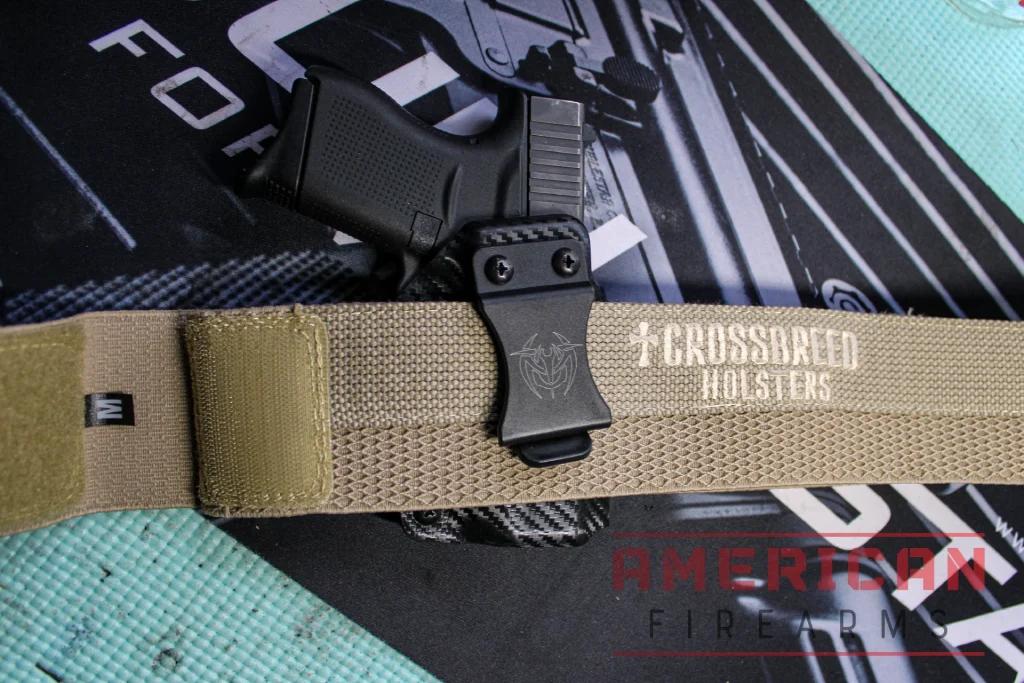
When it comes to concealability, belly band holsters are pretty hard to beat, especially when carrying smaller, compact pistols. Generally, belly band holsters are not built for specific firearms. The holster is often made from the same elastic material as the waistband, meaning you get less retention than other holster types. Still, they’re very comfortable and exceptionally approachable for new CCW permit holders.
Belly bands also often have smaller peripheral pockets for spare magazines, knives, and other concealable items, such as money and other valuables when traveling.
These holsters are self-supporting, so there’s no need to wear a specific pair of pants or belt, and you can get the fit exactly right with a bit of trial and error.
Shoulder Holsters
Shoulder holsters use an over-shoulder harness to support the holster and are familiar to anyone who’s seen a detective flick or two.
These offer a lot of adjustability, so you can get the fit just right. The most common configuration has the barrel pointing to the rear and positioned just under the arm. However, large-frame revolver shoulder holsters position the gun barrel down towards the ground to better distribute the gun’s weight and prevent the gun from printing by protruding out the back.
A shoulder holster is a decent option for both open and concealed carry, especially for those that prefer to support the weight of the gun using their torso.
If carrying concealed, a jacket that zips in the front will be necessary for quick access while also providing concealment.
Ankle Holsters
Ankle holsters are very popular for smaller primary pistols and backup firearms such as a revolver, which fit easily at the ankle and are light enough to be worn all day without discomfort.

While they can limit wardrobe options (you have to have long pants to cover and roomy enough not to print), most bystanders won’t expect a firearm at the ankle, so they’re very effective for concealment. We compiled a list of our top ankle holsters if you want to go deep on them.
An ankle holster can easily offer sufficient concealment and ready access when paired with boots, long pants, or a long dress.
One note on ankle holsters: carrying that low on the body requires you to reach down and possibly bend over to draw the gun. In a dangerous situation it’s critical to keep your eyes on the threat, so bending at the knee (rather than hip) will allow you to keep your head up while lifting the pant leg and drawing without breaking eye contact.
This, of course, requires practice to build the muscle memory to draw safely and quickly, but ankle holsters are a completely viable and effective carry option.
What About Light-Bearing & Optic-Ready Pistols?
Walk into most gun shops today, and you’ll notice something different about the pistols in the display case compared to a decade ago.
Nearly every new defensive handgun now ships optics-ready, and weapon-mounted lights (WMLs) have become standard equipment rather than tactical accessories reserved for home defense guns. The concealed carry market has fundamentally changed, but holster selection advice hasn’t caught up.
If you’re carrying a pistol with a red dot sight, weapon-mounted light, or both, you need a holster specifically designed to accommodate these features.
Trying to force a modern, accessorized pistol into a holster designed for a bare slide creates retention problems, printing issues, and potential safety hazards. Let me walk you through what you need to know.
The Modern CCW Reality
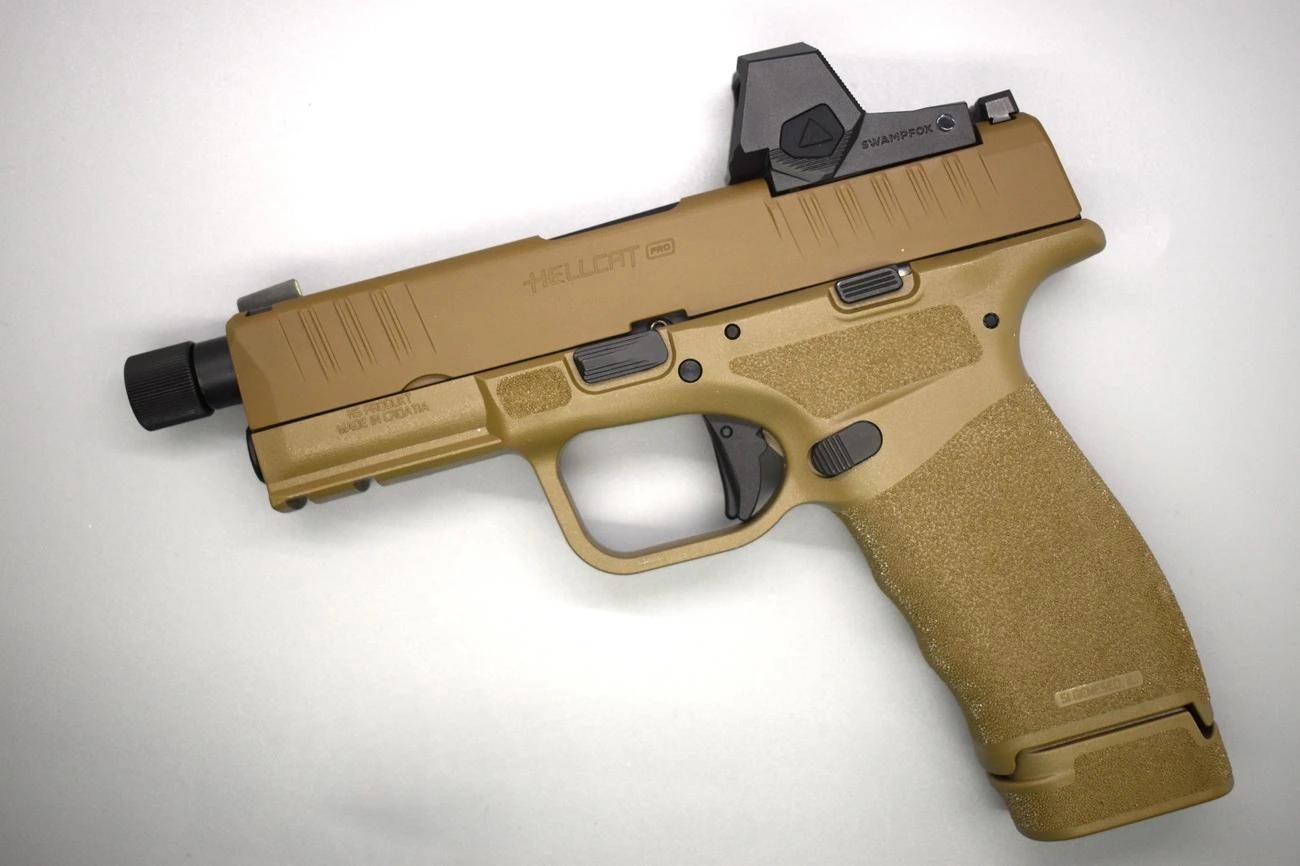
The statistics tell the story clearly: according to industry data, factory-installed red dots represent only 1% of semi-auto handgun shipments over the past 18 months, optics-ready slides have become standard features on most new defensive pistols, creating growing demand for optic-compatible holsters.
Manufacturers like Glock, SIG Sauer, Smith & Wesson, and Springfield are shipping their CCW-focused models with milled slides and integrated light rails as standard features, not premium upgrades.
This shift reflects a broader understanding that red dot optics make shooters faster and more accurate, while weapon-mounted lights solve the low-light identification problem that accounts for the majority of defensive encounters. But these advantages mean nothing if you can’t find a holster that actually works with your equipped pistol.
Light-Bearing Holsters: What Makes Them Different
A weapon-mounted light changes your pistol’s dimensions significantly. A Glock 19 with a Streamlight TLR-7A adds about an inch to the trigger guard length and increases overall width by roughly 0.2 inches. More importantly, it creates a new retention point forward of the trigger guard that changes how holsters must be designed.
Standard holsters cannot safely accommodate light-bearing pistols. The light housing will either prevent proper holster seating, create dangerous gaps around the trigger guard, or cause retention issues where the gun rattles loosely. I’ve seen too many carriers try to make do with a non-light-bearing holster, only to discover their pistol won’t seat properly or the light gets caught during the draw.
Key Considerations for Light-Bearing Holsters
Light compatibility matters more than you’d think. A holster molded for a Streamlight TLR-7A will not work with a SureFire X300U, even though both are popular WML choices. The housings have different shapes, mounting positions, and dimensions. When shopping for light-bearing holsters, you must match three things: your firearm model, your specific light model, and your carry position preference.
Retention characteristics change with lights attached. The light housing becomes the primary retention point rather than the trigger guard. This actually improves retention consistency in many cases—the light’s rigid housing won’t wear like a slide finish can. However, it also means you can’t simply add or remove the light without affecting how the holster performs.
Concealment becomes more challenging. Adding a light increases the holster’s footprint, particularly in width. For appendix carry, this extra bulk can make the holster less comfortable when sitting. For strong-side carry at 3-4 o’clock, the added width can print more noticeably through light clothing. The trade-off is worth it for the tactical advantage a WML provides, but you need to account for it in your clothing choices.
Draw technique requires adjustment. Light-bearing holsters sit slightly differently due to the forward weight distribution. The first 20-30 draws from a light-bearing holster feel noticeably different than from a standard holster. Practice is essential—the extra length can catch on cover garments if you’re not deliberate about your draw stroke.

Popular Light Options and Holster Availability
The big three in concealed carry WMLs are:
- Streamlight TLR-7/TLR-7A (500 lumens, compact profile) – Widest holster compatibility
- SureFire X300U-B (1,000 lumens, duty-sized) – Less common for CCW but excellent for home defense transitions
- Olight PL-Mini 2 Valkyrie (600 lumens, budget-friendly) – Growing holster support
If you’re buying a WML specifically for concealed carry, the TLR-7A offers the best combination of performance and holster availability. Nearly every major holster manufacturer offers TLR-7A compatibility, while more obscure lights may limit your holster options to one or two manufacturers.
Optic-Compatible Holsters: Clearing the Red Dot
Red dot optics add vertical height to your pistol’s slide—typically 0.5 to 1.5 inches depending on the optic and mounting method. This extra height must be accommodated by the holster, or the optic will prevent the gun from seating properly.
The good news: Most modern Kydex holsters designed in the past 3-4 years automatically include optic clearance, even if not explicitly advertised. The molding process for Kydex naturally creates some vertical clearance beyond the slide height. If you’re buying a recently designed holster from an established manufacturer, it will likely work with most red dot optics.
The challenge: Leather holsters and older Kydex designs don’t accommodate optics well. The optic can catch on leather, and older Kydex molds didn’t account for the extra height. If you’re buying used holsters or working with older inventory, verify optic compatibility explicitly.
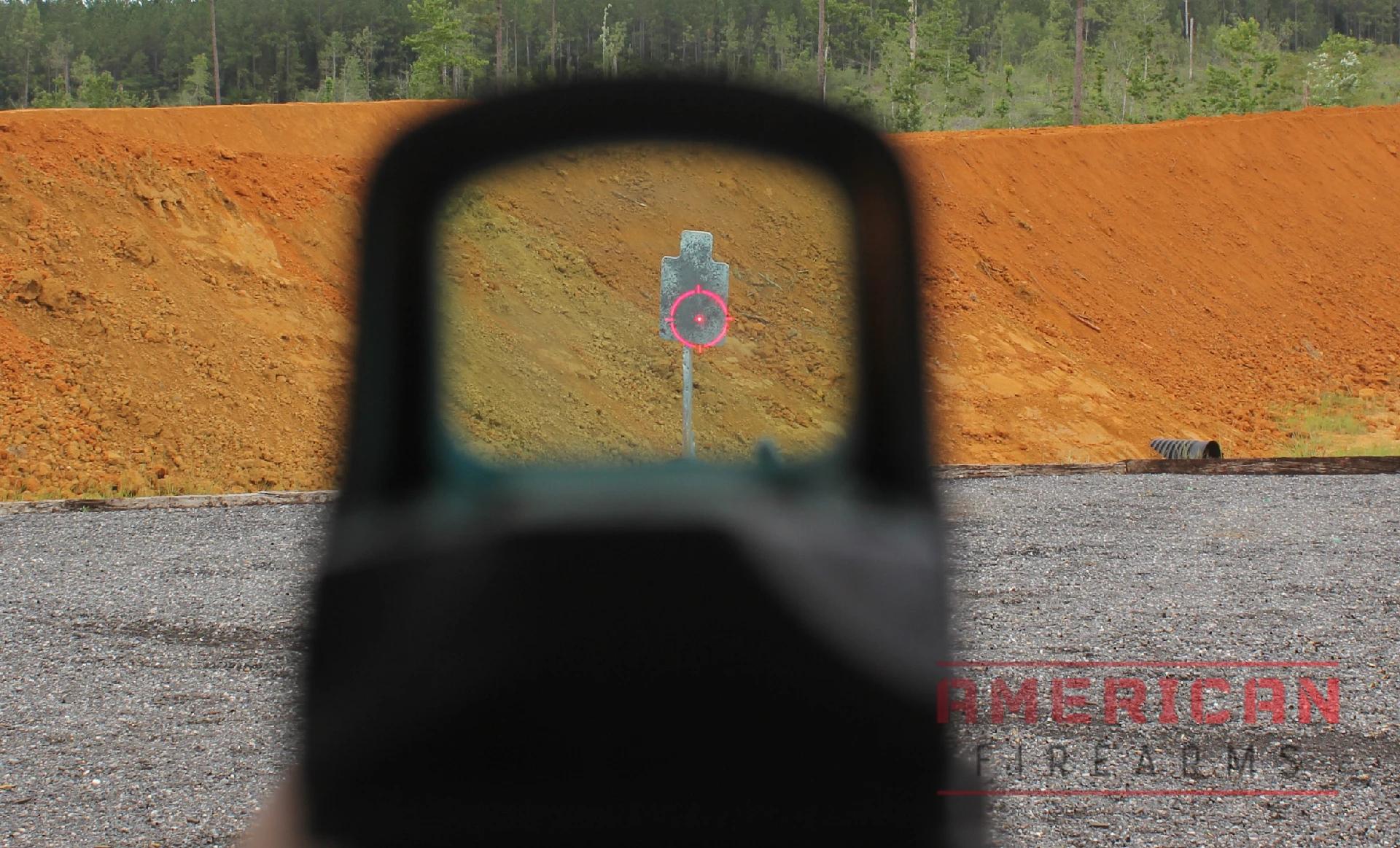
Optic Height Considerations
Not all red dots create equal holster challenges:
Low-profile optics like the Shield RMSc, Holosun 507K, or SIG Romeo Zero add minimal height (under 1 inch) and work with most modern holsters without issue.
Standard-height optics like the Trijicon RMR, Holosun 507C, or SIG Romeo1 Pro add 1.0-1.25 inches and require confirmed optic clearance in the holster design.
Enclosed emitter optics like the Aimpoint ACRO or Steiner MPS create the most holster challenges due to their larger overall footprint. Fewer holsters accommodate these, so verify compatibility specifically.
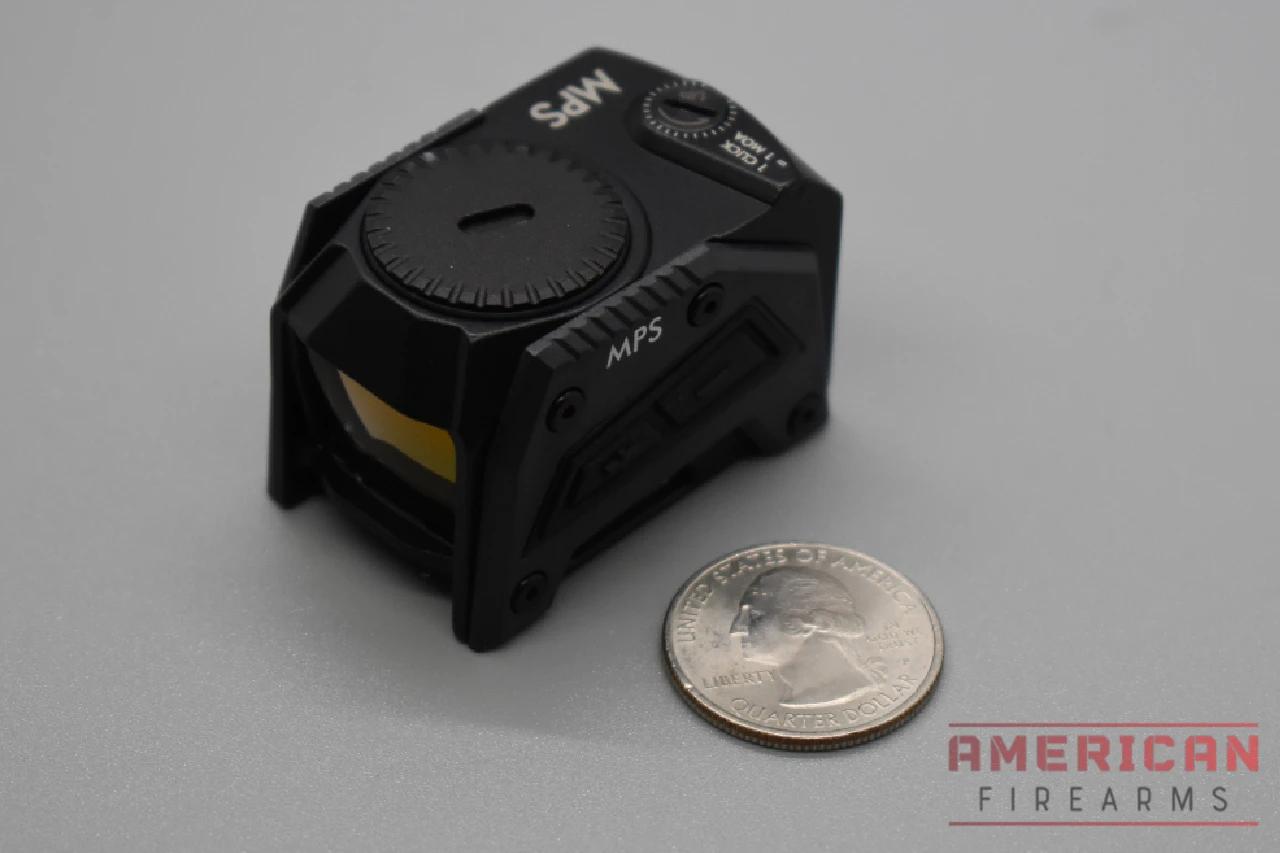
Co-Witnessing Height and Holster Impact
Many shooters opt for suppressor-height sights when mounting red dots to maintain iron sight backup. These taller front and rear sights can create additional holster clearance requirements. If your pistol has suppressor-height sights and a red dot, make sure your holster accommodates both—not just the optic itself.
The Light + Optic Combination
Running both a weapon-mounted light and red dot optic is increasingly common, and it creates the most demanding holster requirements. You need a holster with:
- Forward clearance for the light housing
- Vertical clearance for the optic
- Proper retention that doesn’t rely on the optic or light
- Adequate trigger guard coverage despite the accessories
This combination significantly limits holster options. You’ll primarily find compatibility from dedicated custom holster makers and higher-end manufacturers who specifically design for fully-equipped modern pistols. Budget holsters rarely accommodate both accessories well.
Recommended Features for Accessory-Compatible Holsters
When shopping for holsters that work with lights, optics, or both, prioritize these features:
Adjustable retention screws let you dial in retention to account for the accessories’ impact on how the gun seats. This is crucial because light-bearing retention feels different than standard retention.
Open bottom design ensures the holster doesn’t interfere with threaded barrels or suppressor-height front sights—increasingly common on modern defensive pistols.
Adequate sweat guard height becomes more important with optics, as you want to protect the optic window from body moisture without creating so much material that it interferes with your grip or draws.
Specific compatibility listing from the manufacturer. Avoid “universal” holsters that claim to fit any light or optic. You want a holster explicitly designed for your firearm + accessory combination.
What This Means for Your Holster Budget
Holsters for accessory-equipped pistols cost more—typically $70-120 compared to $40-70 for standard holsters. This reflects the more complex molding process, smaller production runs, and additional design work required to accommodate accessories properly.
Budget accordingly: if you’re investing $400-600 in a red dot optic and $100-150 in a weapon-mounted light, don’t cheap out on the $45 holster. A quality holster for your equipped pistol is not the place to cut corners. The holster is what makes your entire defensive setup functional for daily carry.
Brands Leading the Accessory-Compatible Market
While we haven’t yet tested and reviewed specific light-bearing or optic-compatible holsters for this guide, several manufacturers dominate this market:
- PHLster (Floodlight, Pro) – Universal light-bearing designs that accommodate most WML options
- Tier 1 Concealed (Axis Elite) – Premium appendix rigs with extensive light/optic compatibility
- Tenicor (Certum, Velo) – High-end holsters specifically designed for equipped pistols
- Dark Star Gear (Orion) – Popular AIWB options with light-bearing variants
- Henry Holsters – Affordable light-bearing options with good availability
- JM Custom Kydex – Custom builds for any light/optic combination
If you’re carrying a modern pistol with a red dot, weapon-mounted light, or both, your holster must be specifically designed to accommodate these features. Trying to make do with a standard holster creates safety risks, retention problems, and concealment issues that defeat the purpose of adding these accessories in the first place.
The extra cost—usually $20-40 over a standard holster—is worth it for proper function. And the growing adoption of these features means holster availability has improved dramatically over the past 3-4 years. What was once a custom-order specialty item is now standard inventory from most major manufacturers.
Start your search by identifying your exact firearm model, light model (if applicable), and optic footprint. Then search for holsters explicitly listing compatibility with that combination. The time spent finding the right holster pays dividends in consistent performance, confident carry, and proper function of your defensive setup.
Holster Reviews
1. We The People IWB Holster
The IWB holster from We The People offers a lightweight easy-to-run holster with solid retention and a secure clip that fit my .380 PPK perfectly. The adjustable tension enables you to tune it to your draw strength, which helps accommodate different hand sizes and draw preferences. It’s super easy to set up for your preferred draw position.
Plus the adjustable clip gives you lots of options for ride and cant.
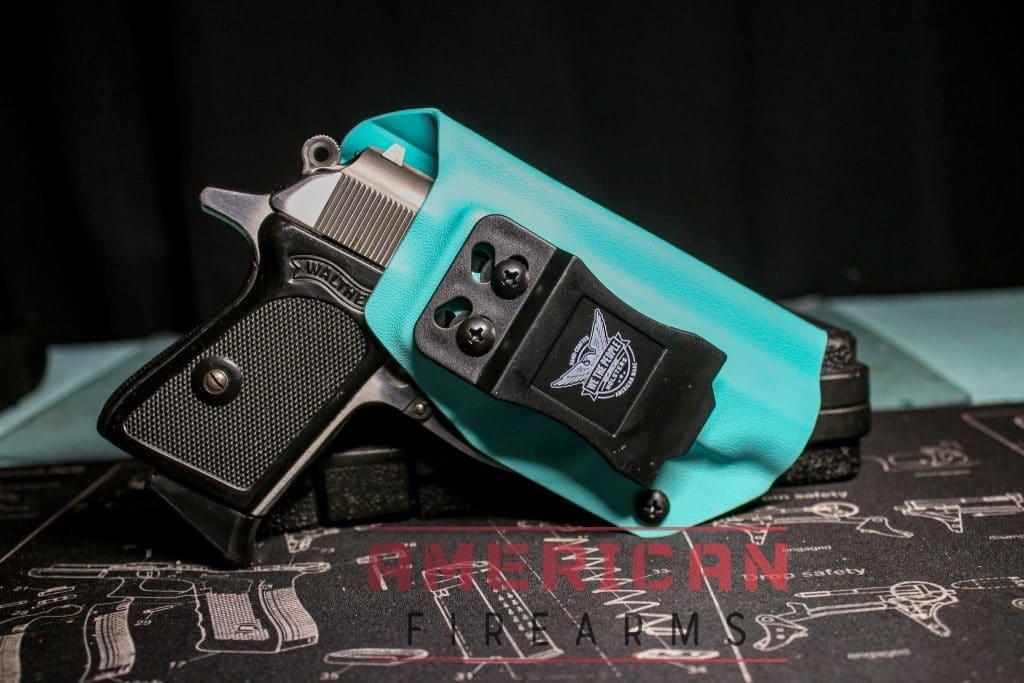
TFor those who prefer to get their sweat on, the We The people IWB holster includes a protective sweat guard, so no fear hitting the gym or heading out for a run — your pistol — and hip — is protected.
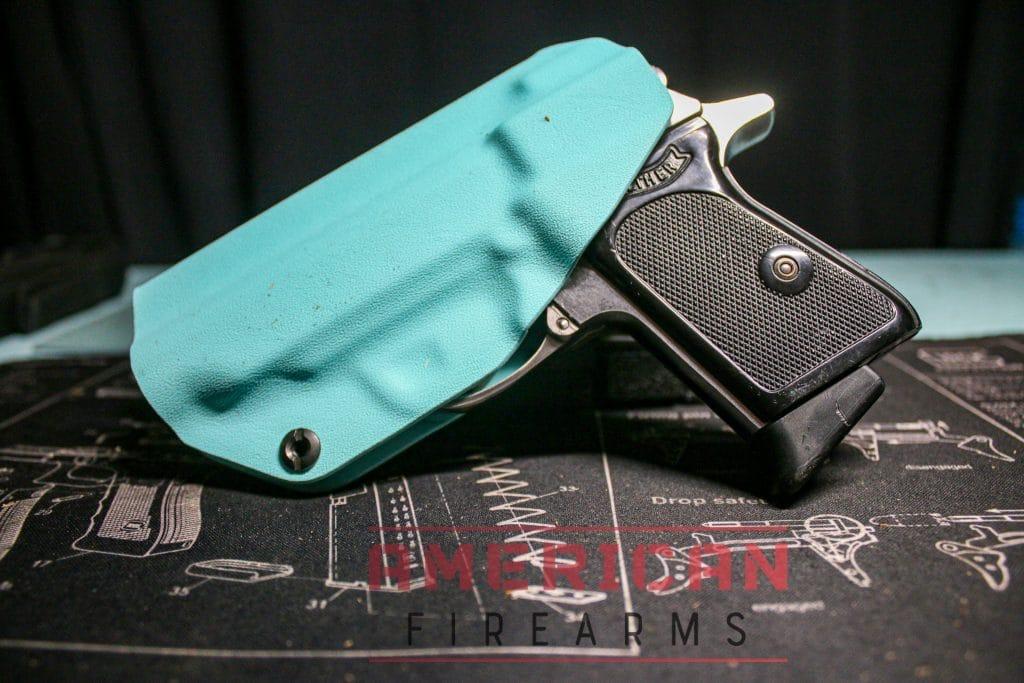
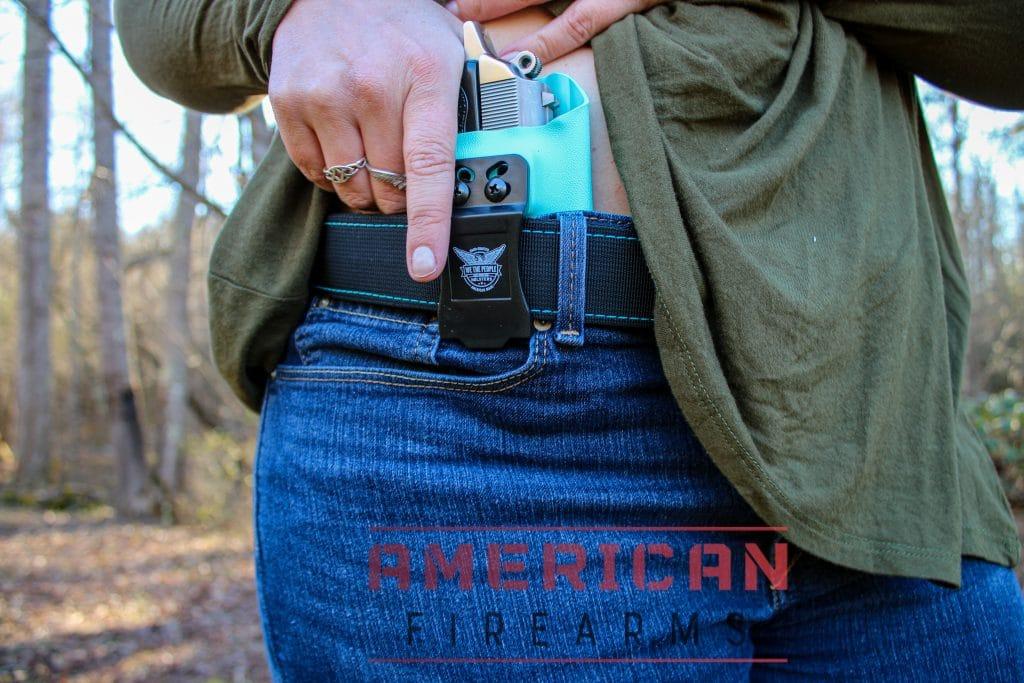
2. CrossBreed DropSlide OWB Holsters
CrossBreed Holsters designed the DropSlide holster for easy access to the grip when drawing your pistol.
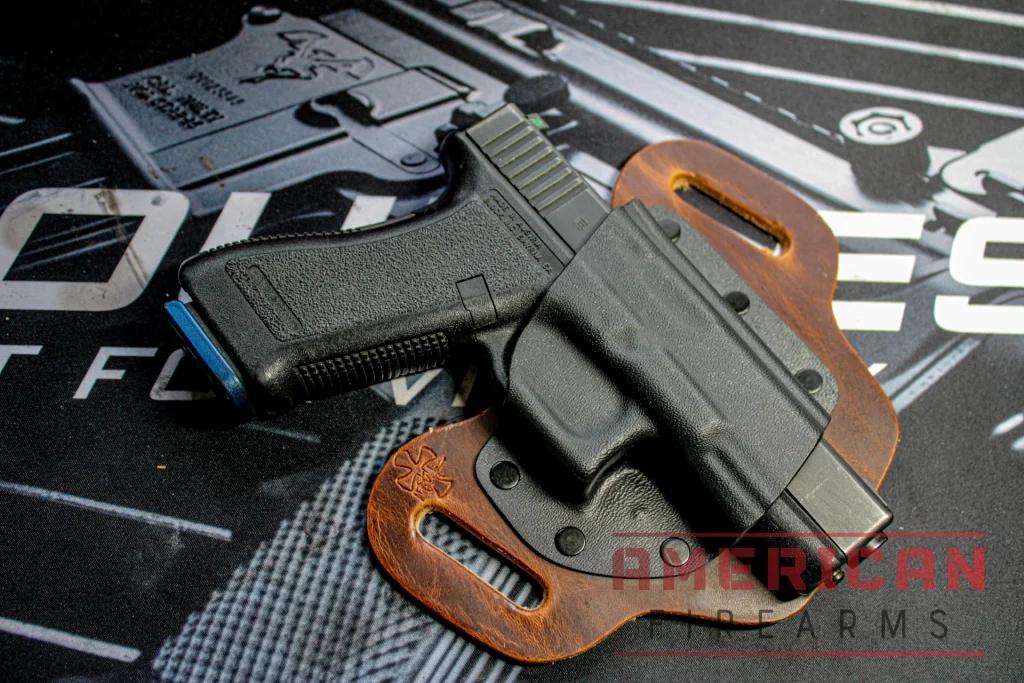
This holster is designed for use outside the waistband and is an option for open carry. These holsters are made from Kydex and are custom-fitted to your specific gun model. When ordering, be sure to choose the gun model and right-hand or left-hand draw.
The belt required to carry this holster needs to be a 1 ¼” or 1 ½” width.
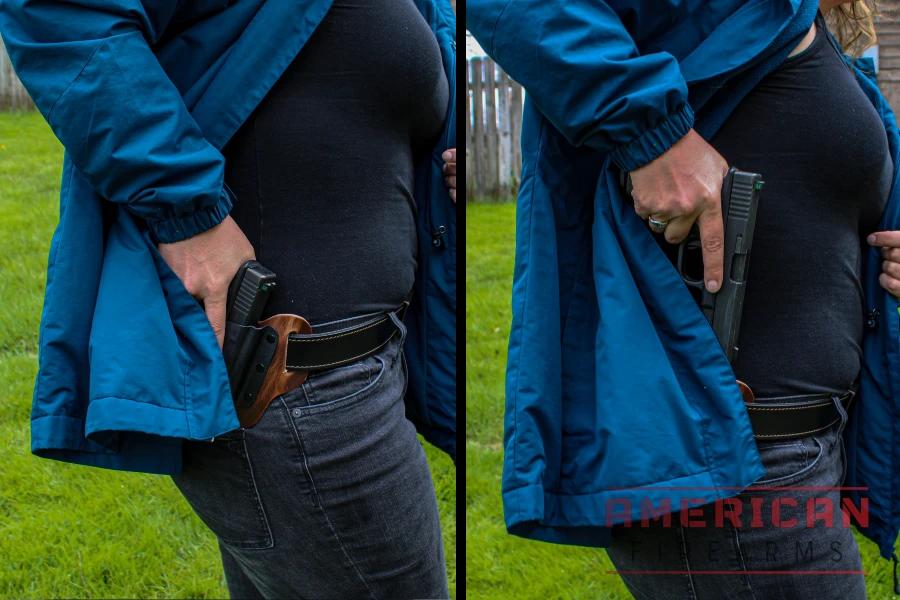
3. CrossBreed Modular Belly Band Holster System
Most belly band holsters are little more than an elastic band with a sewed-in “holster” that’s essentially a pocket with a retaining strap. The CrossBreed Modular Belly Bandholster pairs the flexibility of the elastic band with the security of a molded Kydex holster.

The form-fitting Kydex holster insert secures to the belly band holster via Velco, then a retaining holds the holster in place.
This mix gives you the best of both worlds — comfort and security — and eliminates the retaining strap often seen with other belly band holsters, which can speed the draw. It’s also consistently atop our list of the best belly band holsters.

Also, beyond an on-body carry, CrossBreed also offers various mounts for other applications — purses, bedside mounts, backpacks, and vehicle mounts — which all use the same Velco format, taking the CrossBreed from a holster to a true system.
4. Alien Gear Shapeshift Holster
undefined
Alien Gear is known for making many concealed carry holsters. This model is for IWB concealed carry and is made specifically for the Springfield XDM Compact 9/40. This holster is designed for appendix carry with its neoprene base that lays on the body to keep the gun from chafing the skin.
The Shapeshift design was made so the carrier can easily swap out their current holster for a different carry configuration such as shoulder or a belt slide. The Alien Gear clock tuck IWB is an additional option that may be comfortable for you.
5. Blackhawk!
The Blackhawk! Nylon Horizontal Shoulder Holster is designed to fit any 4.5 – 5-inch large semi-automatic pistol. The setup is ambidextrous so you can adjust the gun to your right or left side depending on your dominant shooting hand. To keep your gun from flopping around, a strap was made to loop around your belt as a mounting point from your shoulder to your hip to keep the gun steady.
6. Safariland 578 OWB Paddle Holster
undefined
Safariland makes some of the sturdiest holsters around due to their work with the military and LEOs. This OWB holster is set up for right-handed shooters and for use only with the M&P Shield 9mm, .40 cal, or 45. The holster is made from a nylon blend material that tolerates extreme high or low-temperature conditions.
This holster is mounted to a paddle design which is easy to tuck into the inside of your pants and supported with your belt in between.
7. Galco Ankle Band Holster
undefined
This Galco Ankle Band Holster is for use with a Glock 26, Ruger LCP, or Walther PPK. When checking out, be sure to choose right or left hand. This holster features a Velcro strap that goes over the back of your grip once the gun is inside the holster.
The material is neoprene allows the holster to breathe and wick moisture away.
8. Galco Classic Shoulder Holster
undefined
The Miami Classic Shoulder Holster is designed to fit models from 1911s to full-size Glocks. This shoulder holster has two spare magazine pouches built so you can be ready for a gunfight.
This is one of the more unique shoulder holsters made completely out of leather connected with Galco’s trademark Flexalon swivel backplate.
9. Sticky Holsters
This belly band works with an actual Sticky Holster so be sure to purchase both the band and holster for your specific firearm. The band is modular so you can rotate it to mount the pistol where you want it on your waist.
This band features extra pockets to store backup magazines, folding knives, a cell phone, and more.
10. Universal Ankle Holster
undefined
This universal ankle holster is a compact gun holster that fits most small models such as a Glock 43 or 42, Smith and Wesson’s Shield model, and even the Ruger LCP handgun.
This holster is ambidextrous so lefties are in luck. The neoprene holster offers a lot of comfort because the material is moisture-wicking and dries quickly. The most important thing to note about this ankle holster is the additional support from the strap above the actual holster. This allows for the gun to stay upright and be supported from higher up on the leg. Best part? BlitzShot makes this holster in the good ole US of A.
11. Talon Tuckable IWB Holster
undefined
Talon Holsters are American made with Hermann Oak American steer hide leather. The Talon Concealed Carry Tuckable IWB Leather Holster model fits the Beretta Nano 9mm. Be sure to choose right or left hand at checkout. This IWB holster is fitted with an external clip made tight to the holster for excellent concealed carry.
Wrap Up
Carrying a firearm is an inherently personal decision, and when it comes to the right holster, the choice is yours and yours alone. If given the opportunity to try before you buy or demo other’s holsters, say yes!
You may find different options work better for specific wardrobes, seasons, or guns you own, so variety and practice will ensure you get the most of our every carry option.
Concealed Carry Holsters & Women
Concealed carry for women presents unique challenges that most holster manufacturers—and frankly, most holster reviews—completely ignore. Body shape differences, clothing variations, and comfort considerations that work perfectly for male carriers often fail spectacularly for women. Being a female member of our testing team and reviewing feedback from hundreds of women carriers throughout my training courses, I’ve learned that holster selection for women requires addressing factors that never cross most men’s minds.
The reality is that most holsters are designed by men, tested by men, and marketed with men in mind. Hip flare, bust size, shorter torsos, and dramatically different clothing options all impact holster selection in ways that standard reviews don’t address. Let’s fix that.
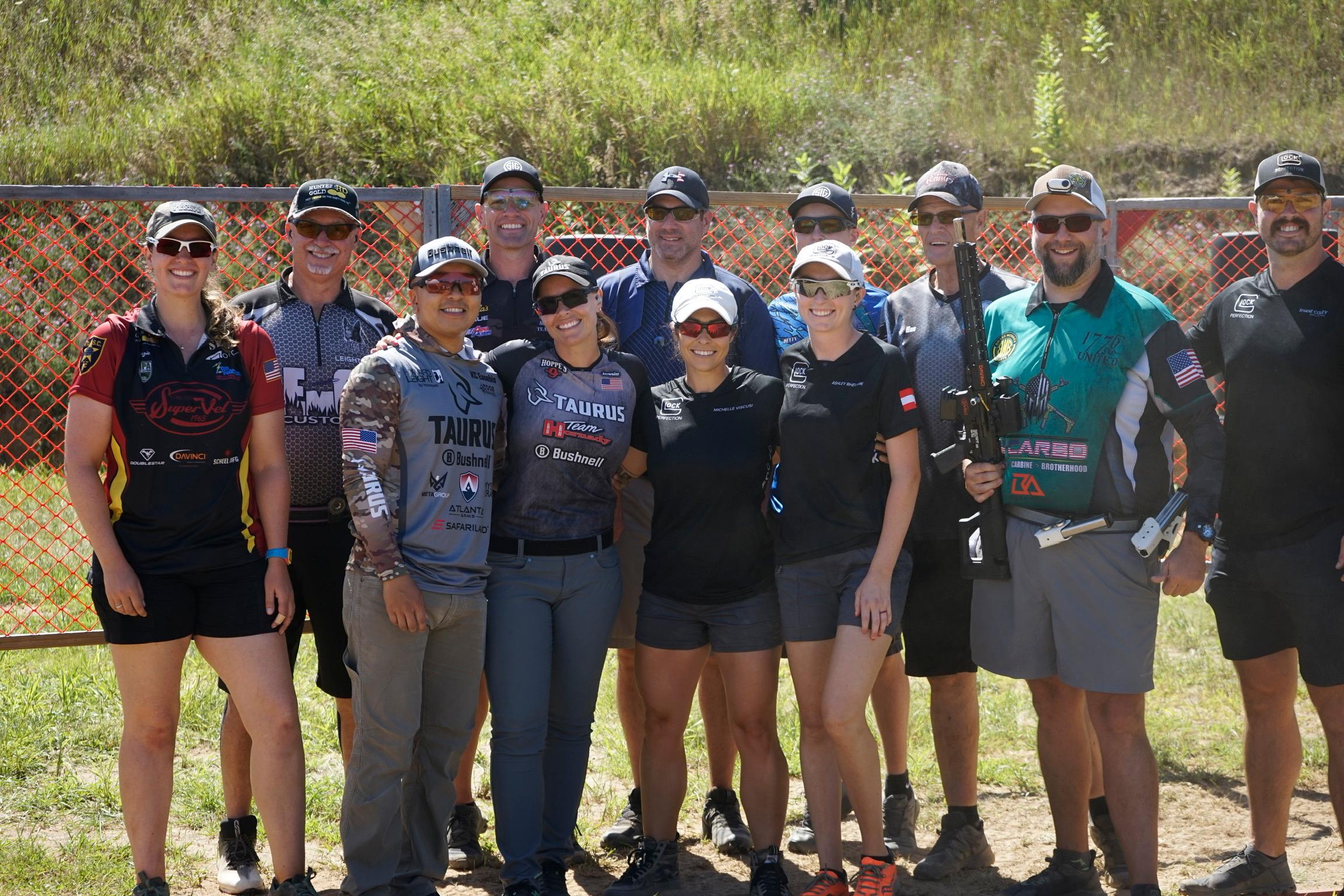
The Core Challenges Women Face
Body shape and holster positioning create the first major hurdle. Women’s hip flare often pushes IWB holsters away from the body at the 3-4 o’clock position, creating printing issues that don’t occur on straighter male frames. What conceals perfectly on a man’s body can stick out noticeably on a woman’s curves.
Shorter torso length means less real estate between hips and ribs for holster placement. AIWB carry that works comfortably for a 6-foot tall man might dig into a 5’4″ woman’s ribs when sitting. The distance from belt line to bottom of ribcage matters enormously, and women typically have 2-3 inches less space to work with.
Bust size impacts printing in ways male reviewers never consider. A holster that disappears under a loose t-shirt on a flat-chested tester might print obviously under the same shirt on a woman with a larger bust that pulls fabric tighter against the body.
Clothing diversity is where women’s carry challenges really diverge from men’s. While men typically carry in jeans or pants with sturdy belts, women navigate dresses, skirts, leggings, yoga pants, professional attire, and athletic wear—often without belt support. A holster solution that works in jeans becomes useless when wearing a dress to a wedding or leggings to the gym.
Our Top Pick for Women: Crossbreed SuperTuck or Alien Gear Cloak Tuck 3.5
BEST OVERALL FOR WOMEN: After extensive testing and feedback from our female team members, hybrid holsters like the CrossBreed SuperTuck or Alien Gear Cloak Tuck 3.5 consistently earn top marks for women’s concealed carry. The leather backing spreads pressure across a larger area (critical for hip carry on curvier frames), while the Kydex shell maintains reliable retention.
The wide backing helps bridge the gap created by hip flare, keeping the firearm closer to the body for better concealment.
Both holsters offer adjustable cant and ride height, allowing women to dial in positioning that accommodates their specific torso length and body shape. The leather backing also provides enough cushioning to remain comfortable during 8+ hour wear periods, which matters more for women who typically have less body mass to cushion holster pressure points.
Price: CrossBreed SuperTuck ~$75-85, Alien Gear Cloak Tuck 3.5 ~$45-50
Position-Specific Recommendations for Women
Appendix Carry (AIWB) for Women
Appendix carry works exceptionally well for many women, particularly those with shorter torsos or significant hip flare that makes strong-side carry print more noticeably. The flatter front profile of most women’s bodies often conceals appendix-carried firearms better than the curved hip area.
Best for AIWB: PHLster Enigma (Universal System) or Tier 1 Concealed Axis Elite
The PHLster Enigma deserves special mention because it’s genuinely revolutionary for women. This belt-less system attaches to your body rather than your pants, meaning it works with dresses, skirts, yoga pants, and any other clothing without belt loops. One of our female testers called it “life-changing” for her ability to carry in professional attire.
The system uses a leg leash to prevent the holster from shifting, and the face plate adjusts to accommodate different body shapes. Yes, there’s a learning curve to set it up initially, but once dialed in, it enables carry in clothing that previously required off-body options.
Considerations for women in AIWB:
- Sit down while trying the holster—many women find AIWB digs into their lower abdomen more than men experience
- Adjust ride height carefully; women’s shorter torsos mean less room for error
- Consider going one holster size smaller than you think you need; women often carry slightly smaller guns that benefit from more compact holsters
Strong-Side Carry (3-4 o’clock) for Women
Strong-side carry presents the hip flare challenge, but it remains viable with the right holster selection.
Best for strong-side: Hybrid holsters with wide backing (CrossBreed SuperTuck, Alien Gear, StealthGear Ventcore)
The key is choosing holsters with wide leather or synthetic backing that bridges the gap created by hip curves. Our female testers consistently report that narrow Kydex-only holsters at the 3-4 o’clock position print noticeably, while hybrid holsters with 3-4 inch wide backing conceal much better.
Fit considerations:
- Forward cant (15-20 degrees) often conceals better on women’s hip flare than neutral cant
- Ride height matters more—too high and it digs into ribs, too low and it prints below the belt line
- Test while sitting; hip flare increases when seated and can push the holster away from the body
Off-Body Carry: Purses and Bags
I’m generally skeptical of off-body carry, but I also recognize that sometimes it’s the only viable option for certain clothing situations. If you’re going to carry in a purse or bag, do it right.
Best dedicated concealed carry purse: Gun Tote’n Mamas or Galco holster handbags
CRITICAL SAFETY WARNINGS for purse carry:
- The holster compartment must be completely separate from the main bag—never let your gun share space with keys, pens, or other objects
- Never set your purse down in public restrooms, shopping carts, or restaurant tables
- Consider a cross-body bag with a locking concealed carry compartment
- Keep the bag on your body at all times—purse snatching puts a gun in criminal hands
- Practice drawing from your purse; it’s significantly slower than body carry and requires different technique
Better alternative to purse carry: If you’re considering purse carry solely because your outfit lacks a belt, look at the PHLster Enigma or belly band options first. Off-body carry should be a last resort, not a first choice.
Belly Bands for Women
Belly bands excel for athletic wear, dresses, and any clothing without belt support. They’re also excellent for women who change outfits multiple times during the day and want one holster solution that transfers between clothing types.
Best belly band: ComfortTac Ultimate Belly Band or Crossbreed Modular Belly Band
Our female testers appreciate that quality belly bands include a built-in Kydex trigger guard or hard holster insert—essential for safety. The elastic band itself doesn’t protect the trigger; you need a rigid component.
Belly band considerations for women:
- Position matters enormously—experiment with placement above hips, below bust, or at natural waist
- Tighter elastic provides better retention but can be uncomfortable during long wear
- Works exceptionally well under flowy dresses or athletic wear
- Not ideal for very small guns (LCP-sized) which can shift in elastic holsters
- Practice drawing; the grip angle is different than belt-mounted holsters
Thigh Holsters
Thigh holsters remain controversial and niche, but they solve specific problems for women wearing dresses or skirts.
Best thigh holster: Can Can Concealment Hip Hugger or Dene Adams Corset Holster
These designs attach to your thigh with elastic bands and sit high enough to remain concealed under knee-length or longer dresses. Drawing requires reaching under your skirt, which is neither quick nor subtle, but it beats being unarmed at formal events.
Reality check on thigh holsters:
- These are “better than nothing” solutions for specific clothing situations, not everyday carry recommendations
- Drawing is slow and obvious
- Comfort during extended wear is questionable
- Only viable for small, lightweight firearms (J-frame size or smaller)
- Consider if formal dress events are rare enough that off-body carry in a clutch might be more practical
Bra Holsters
The Flashbang bra holster gets mentioned frequently in women’s carry discussions. Having asked female testers for honest feedback, the consensus is: it’s an extremely limited-use option.
Flashbang Bra Holster considerations:
- Only works with specific bra styles (traditional underwire)
- Extremely uncomfortable for extended wear
- Printing is difficult to avoid with larger firearms
- Drawing requires significant practice and is very slow
- Best suited for tiny .380s or small 9mms only
- Our testers describe it as “emergency backup gun” rather than primary carry
Most women who try bra holsters end up abandoning them within a few weeks. Belly bands or the Enigma system work better for the same clothing situations.
Firearm Size Considerations for Women
While this is a holster article, I’d be remiss not to address the elephant in the room: women are routinely steered toward tiny .380 pocket pistols when they could comfortably carry more capable firearms with proper holster selection.
The assumption that women need the smallest possible gun because of smaller hands or frames is outdated and often wrong. Many women carry Glock 19s, Smith & Wesson M&P Compacts, or even full-size 1911s concealed effectively with proper holster selection and positioning.
Don’t assume you need the smallest gun. Instead:
- Try multiple firearm sizes with proper holsters before deciding
- Consider that slightly larger guns often shoot more accurately and comfortably
- Remember that holster quality matters more than gun size for concealment
- Test carry positions with different gun sizes—AIWB often conceals larger guns better than hip carry for women
Clothing Modifications That Can Help
Several of our female testers have found simple clothing modifications that dramatically improve concealment without requiring completely new wardrobes:
Belts matter enormously. A proper gun belt (1.5″ width, reinforced) makes hip carry viable in jeans or pants where fashion belts fail. Consider investing in a quality belt before buying multiple holsters.
Structured fabrics conceal better than clingy materials. Cotton button-ups conceal better than form-fitting knits. Blazers and cardigans create excellent concealment layers.
Buy pants one size larger if you carry IWB. The extra room in the waistband accommodates the holster and gun without printing or discomfort.
Undershirts create a moisture barrier between Kydex holsters and bare skin while also reducing printing under outer garments.
Practice and Training
Women face unique drawing challenges based on clothing types and holster positioning. What you wear dramatically impacts your draw stroke.
Practice drawing while wearing the actual clothing you’ll carry in—not just jeans and a t-shirt at the range. If you’ll carry in professional attire, practice drawing while wearing a blazer. If you use belly bands under dresses, practice that specific draw stroke.
Consider taking a women’s-specific concealed carry class where instructors understand the unique challenges and clothing considerations women face. Mixed-gender classes often focus on male-typical carry methods that don’t translate well.
The Bottom Line for Women
Concealed carry for women requires more experimentation and flexibility than for men, but effective solutions exist for virtually every clothing situation and body type. The key is refusing to accept that you must carry tiny, difficult-to-shoot pistols in uncomfortable holsters just because that’s what gets marketed to women.
Start with a quality hybrid holster (CrossBreed SuperTuck or Alien Gear Cloak Tuck 3.5) for traditional belt-supported clothing. Add a belly band (ComfortTac or CrossBreed Modular) for athletic wear and belt-less options. If you regularly wear dresses or skirts, invest in the PHLster Enigma system—it’s expensive ($85-100), but it genuinely solves problems no other holster addresses.
Avoid the temptation to go straight to off-body carry in a purse. While it’s sometimes necessary, it’s also the slowest, least secure, and most theft-vulnerable carry method. Explore body-worn options thoroughly before defaulting to purse carry.
Finally, ignore anyone who tells you that you “have to” carry a specific gun size or use a specific position because you’re a woman. Body shape matters, clothing matters, and comfort matters—but none of these factors are determined solely by gender. Find what works for your specific body, clothing, and lifestyle through experimentation and testing.
Additional Resources
- SSRN, John R. Lott, Rujun Wang, Concealed Carry Permit Holders Across the United States, September 21, 2020
- Google Books, Brad Fitzpatrick, Shooter’s Bible Guide to Concealed Carry, 2nd Edition, January 15, 2019
Updated
December 27, 2025 — Added new “How We Test” section detailing 30-day testing protocols, draw performance metrics, and team credentials; and “Material Guide: Kydex vs. Leather vs. Hybrid” comparing materials with pros/cons, climate considerations, and maintenance requirements.
Sign up for our newsletter
Get discounts from top brands and our latest reviews!

